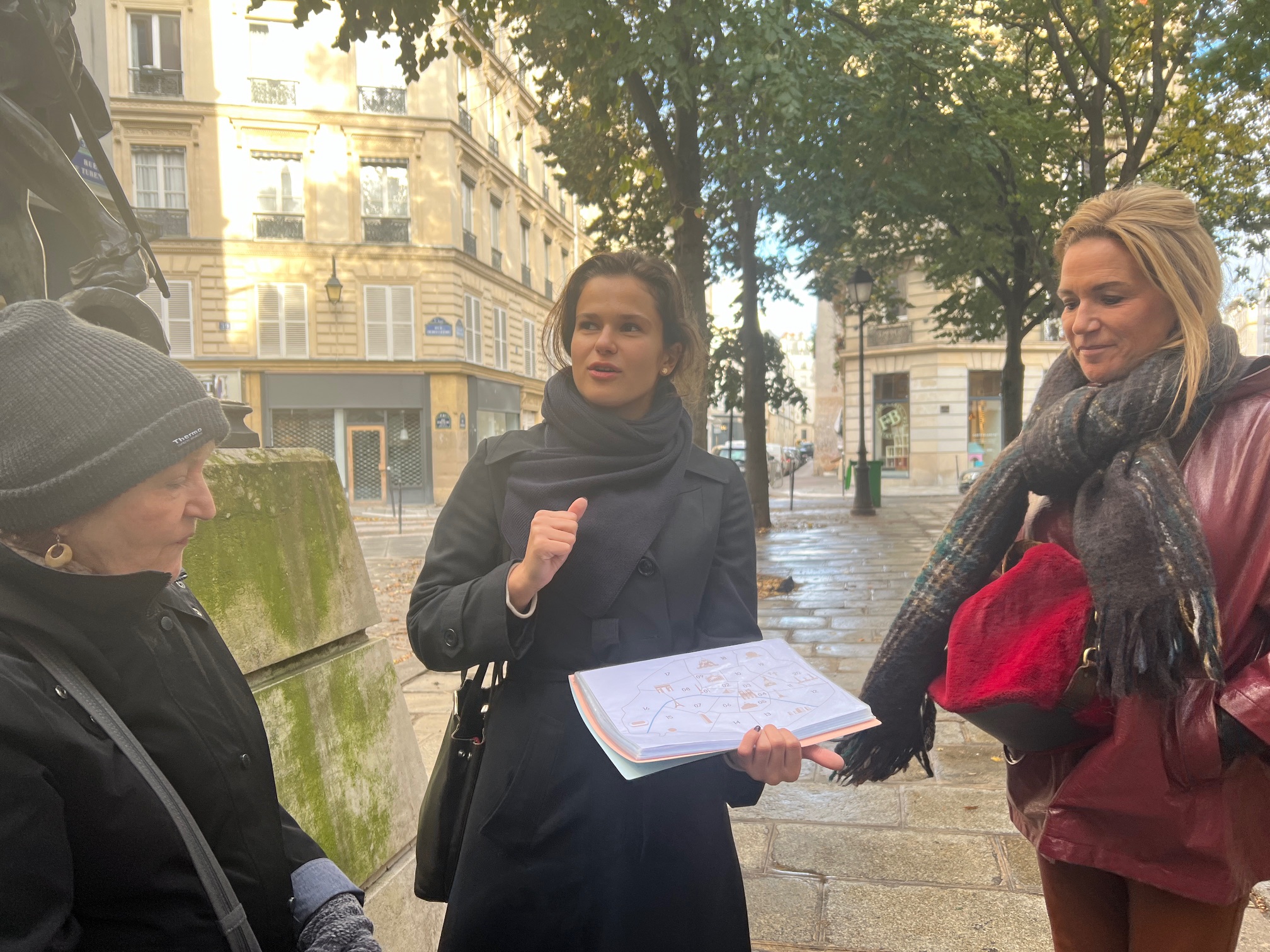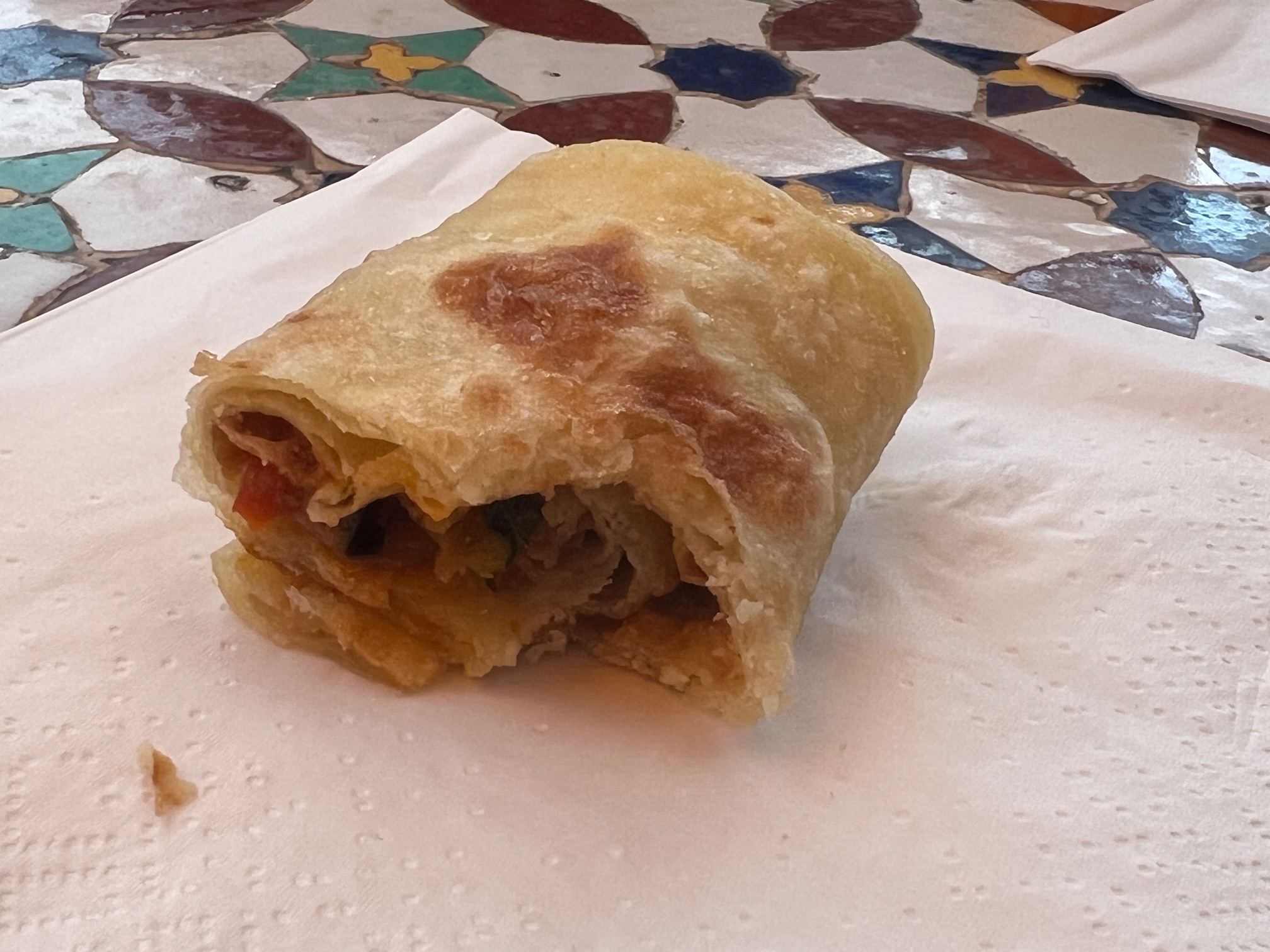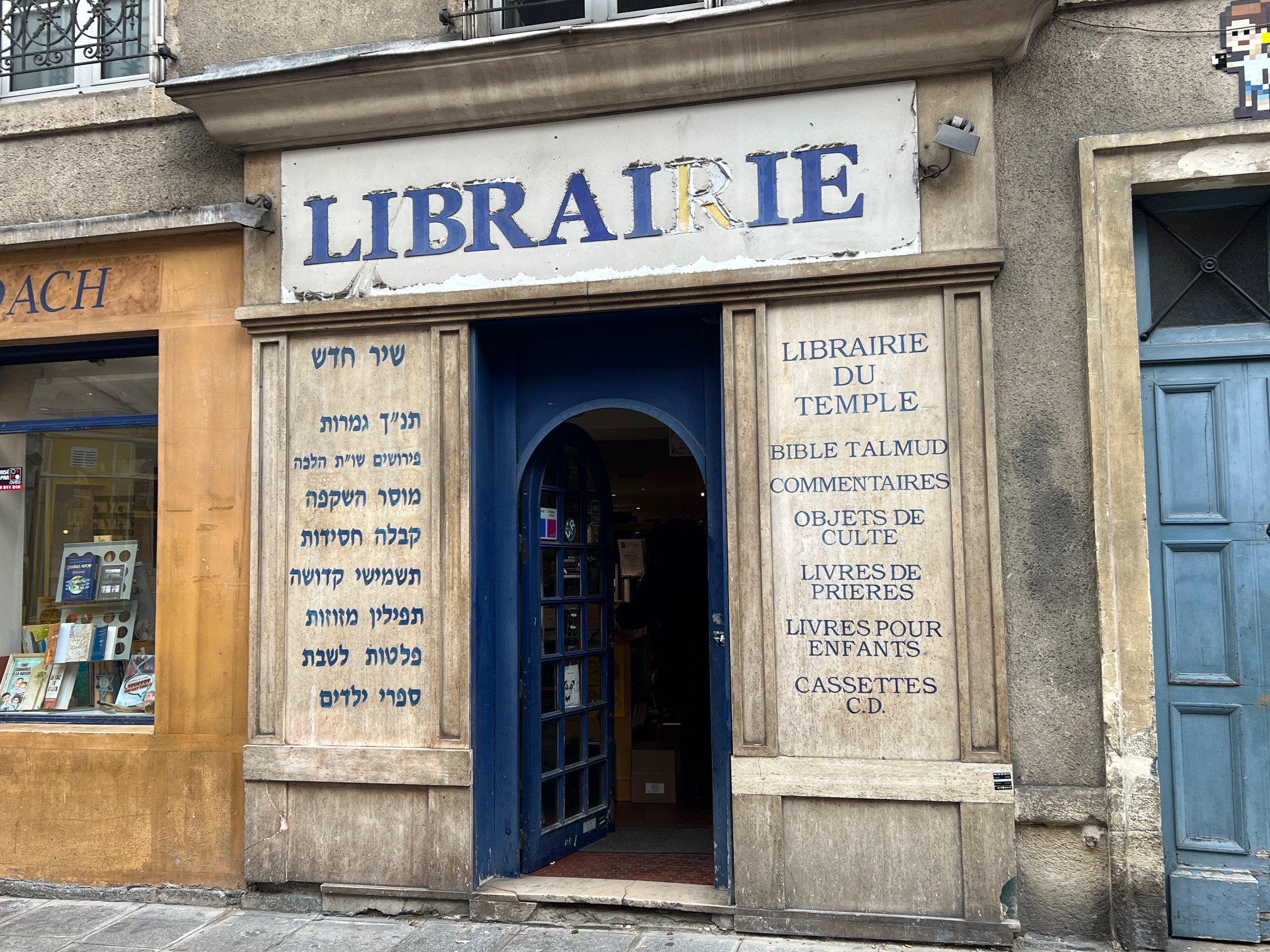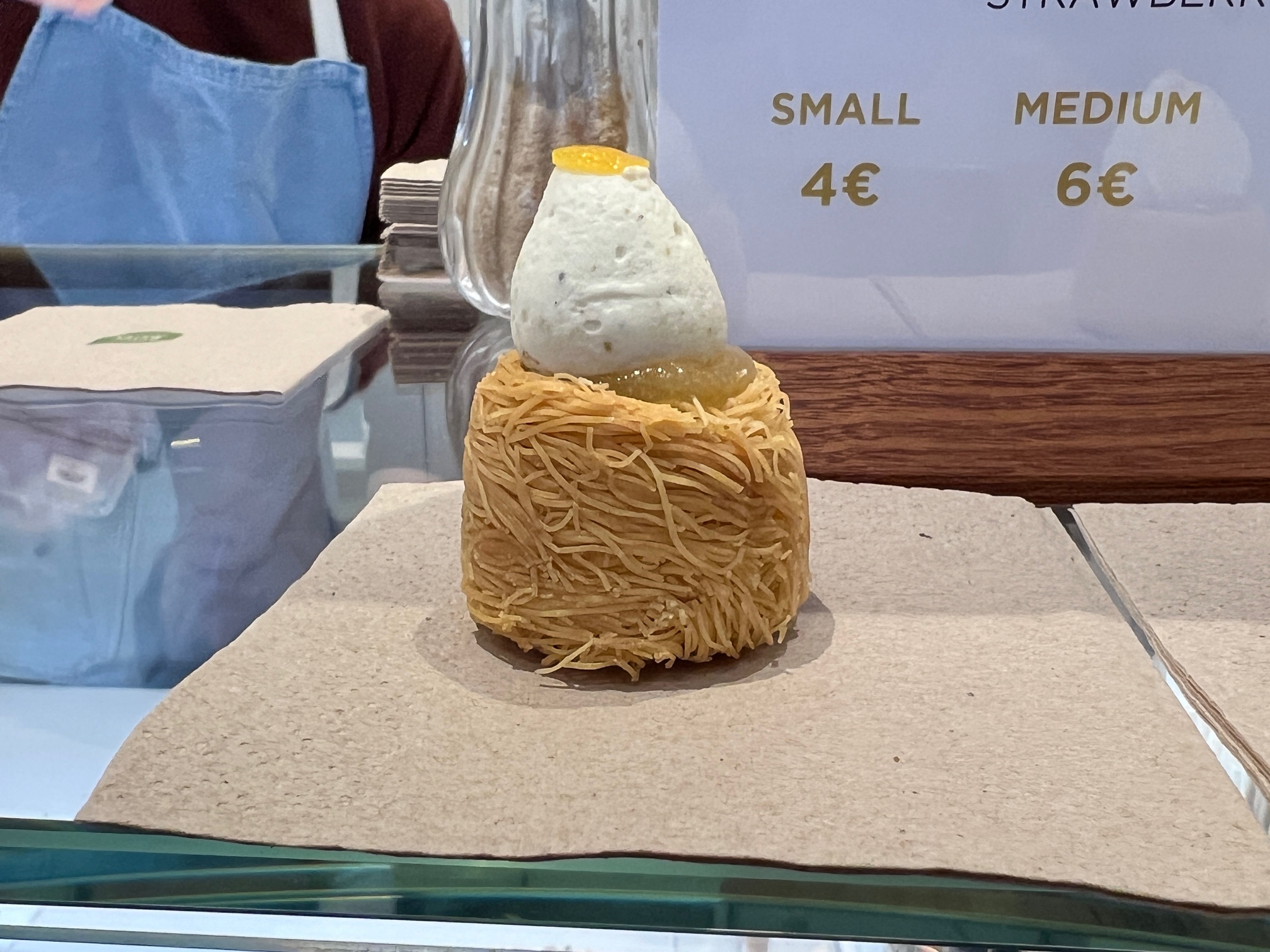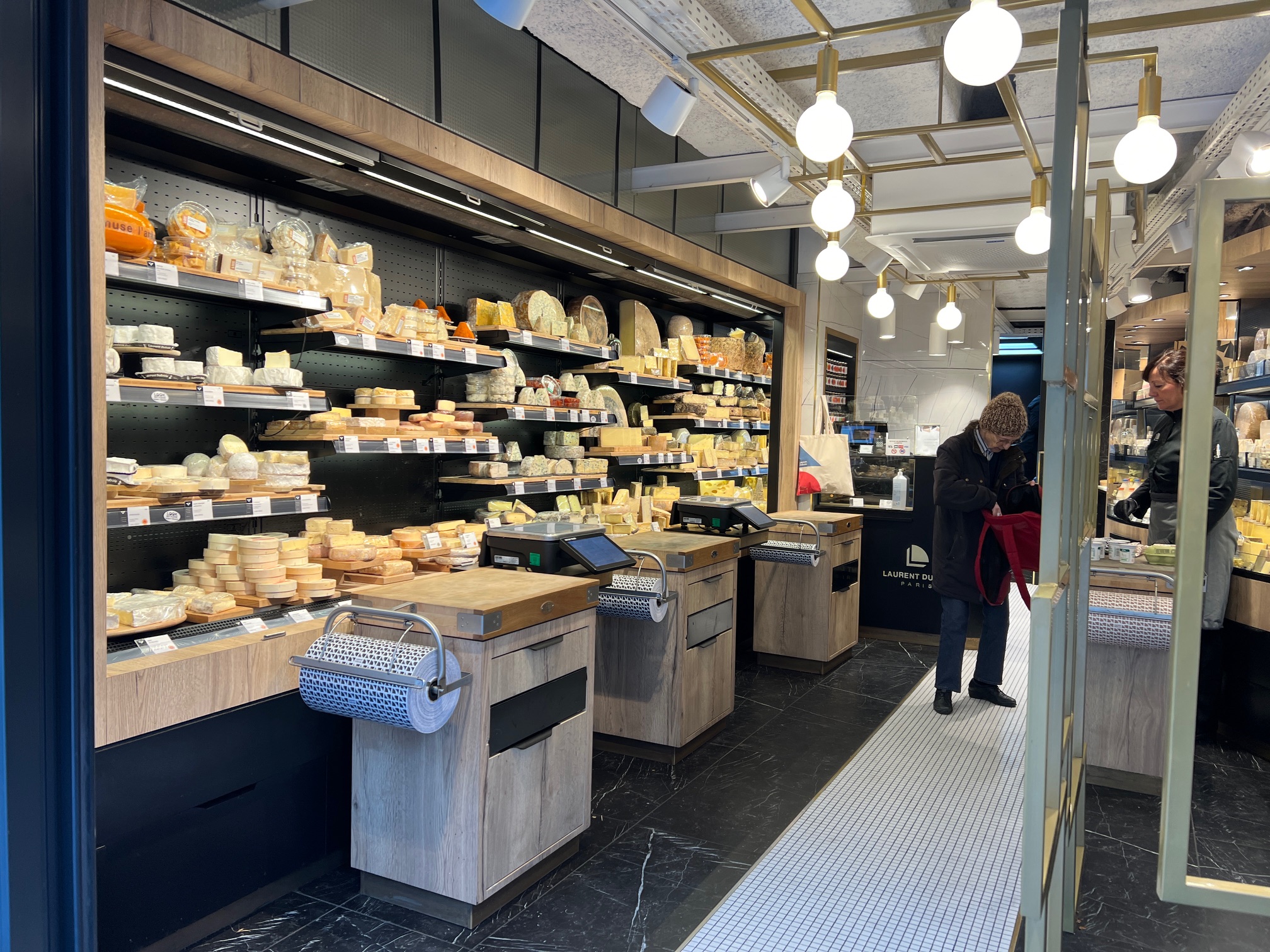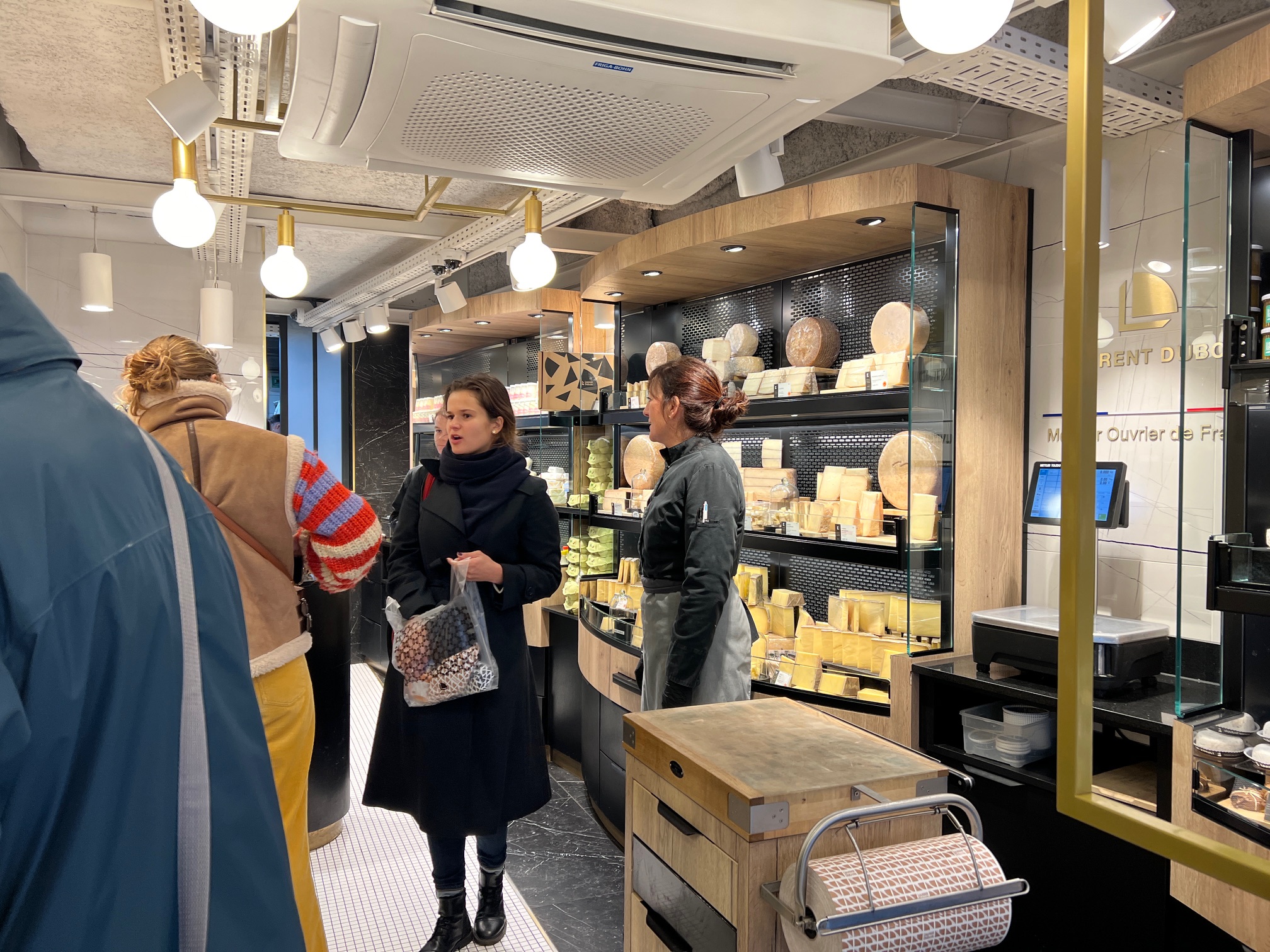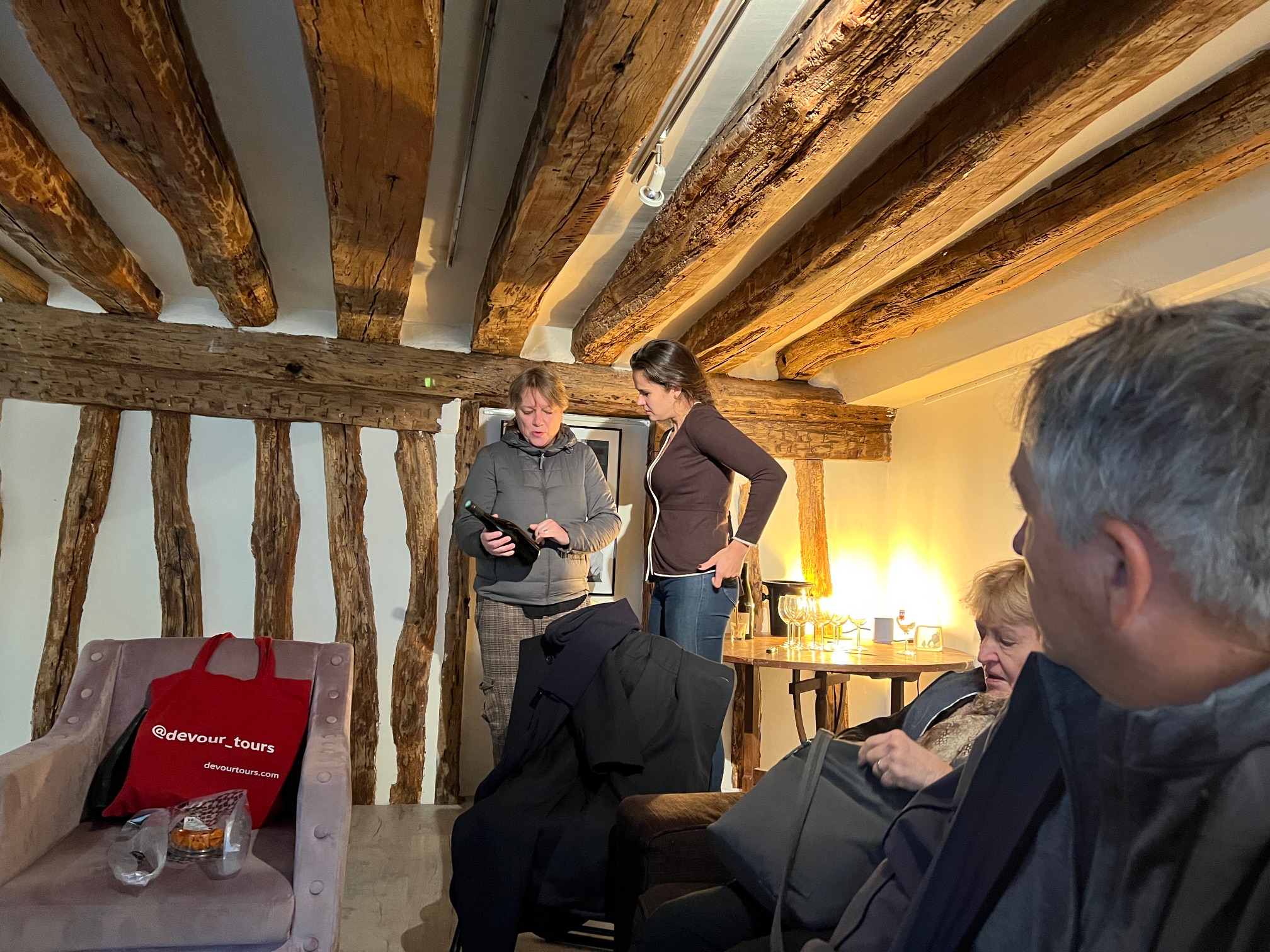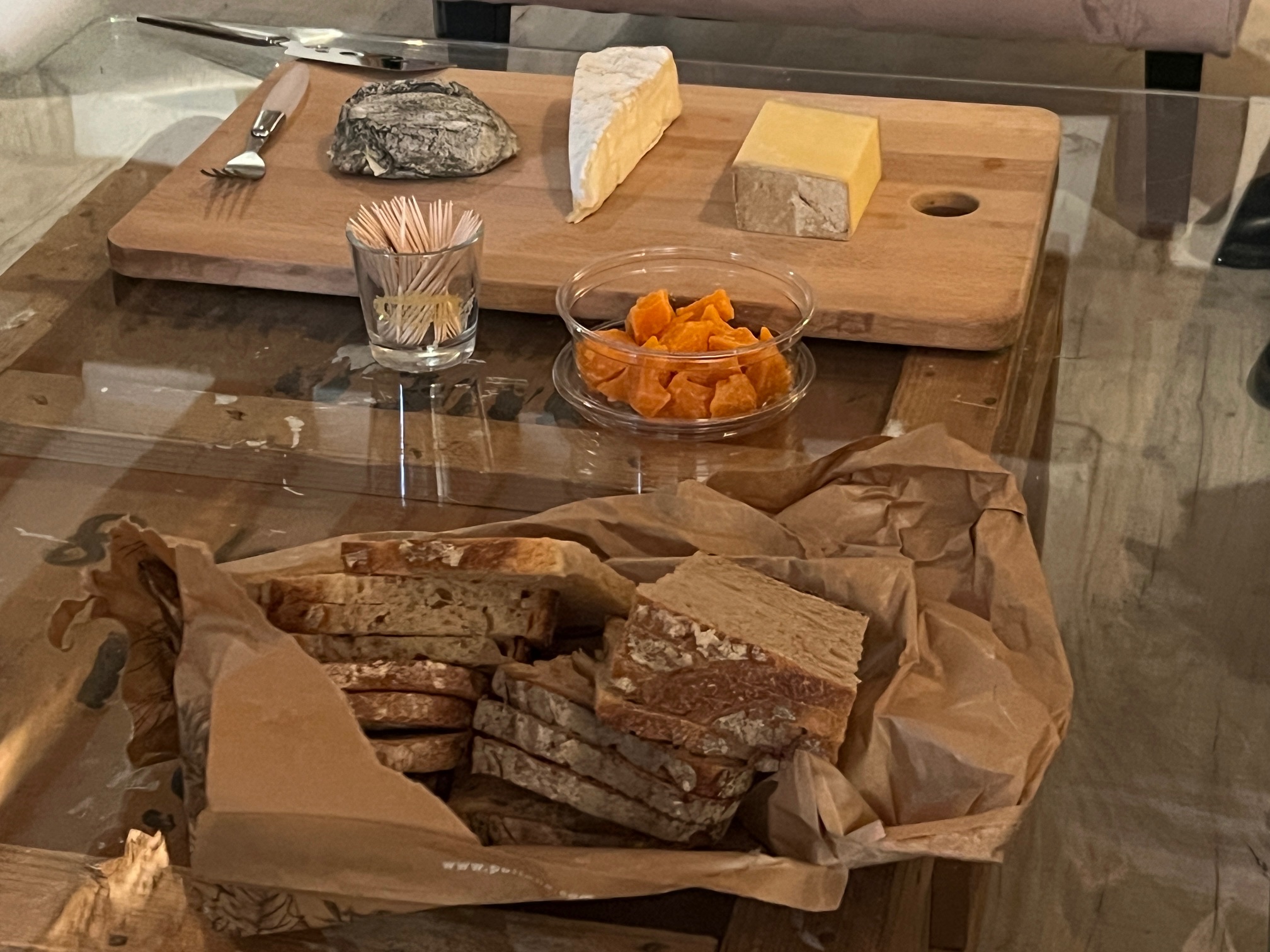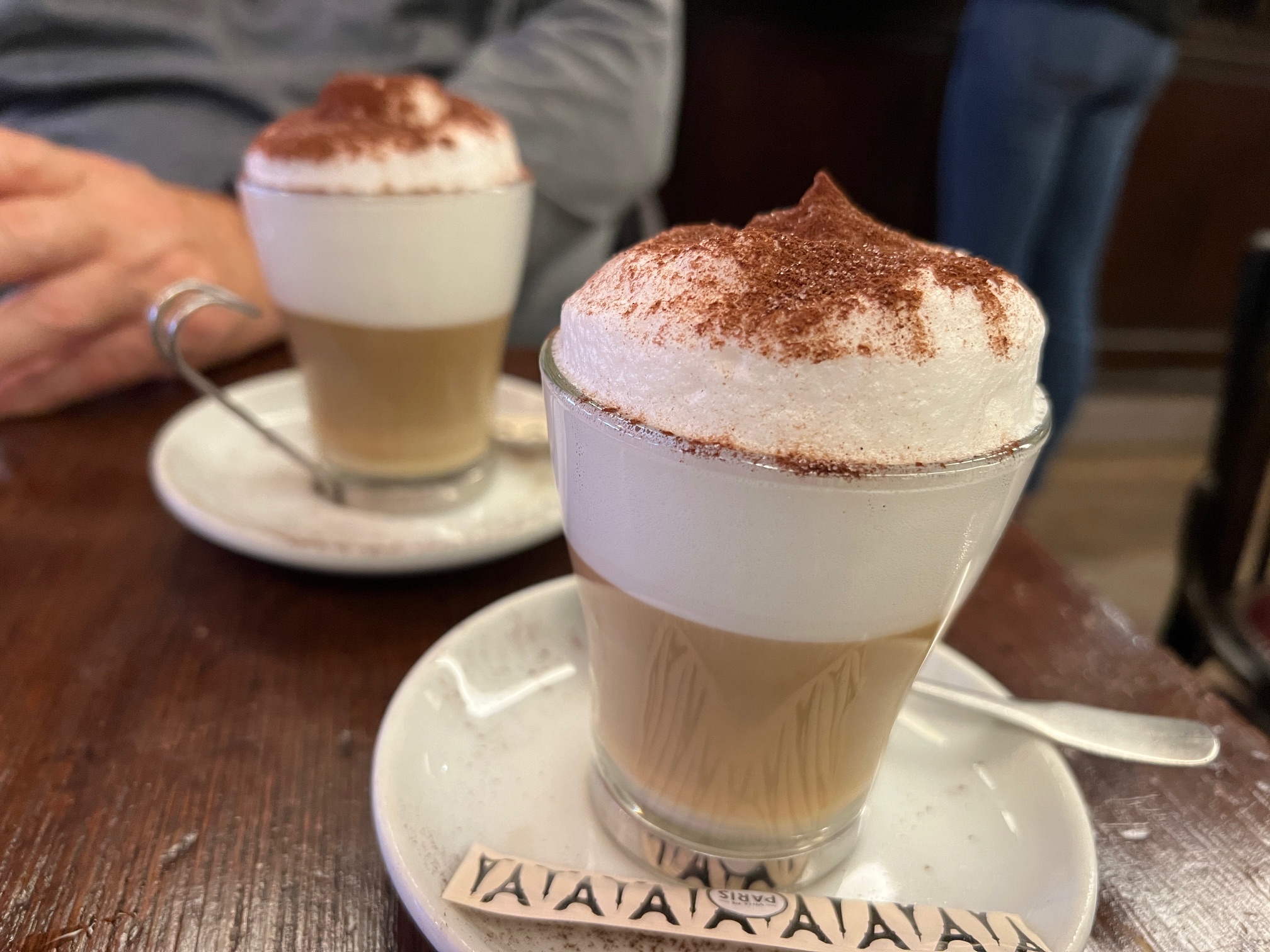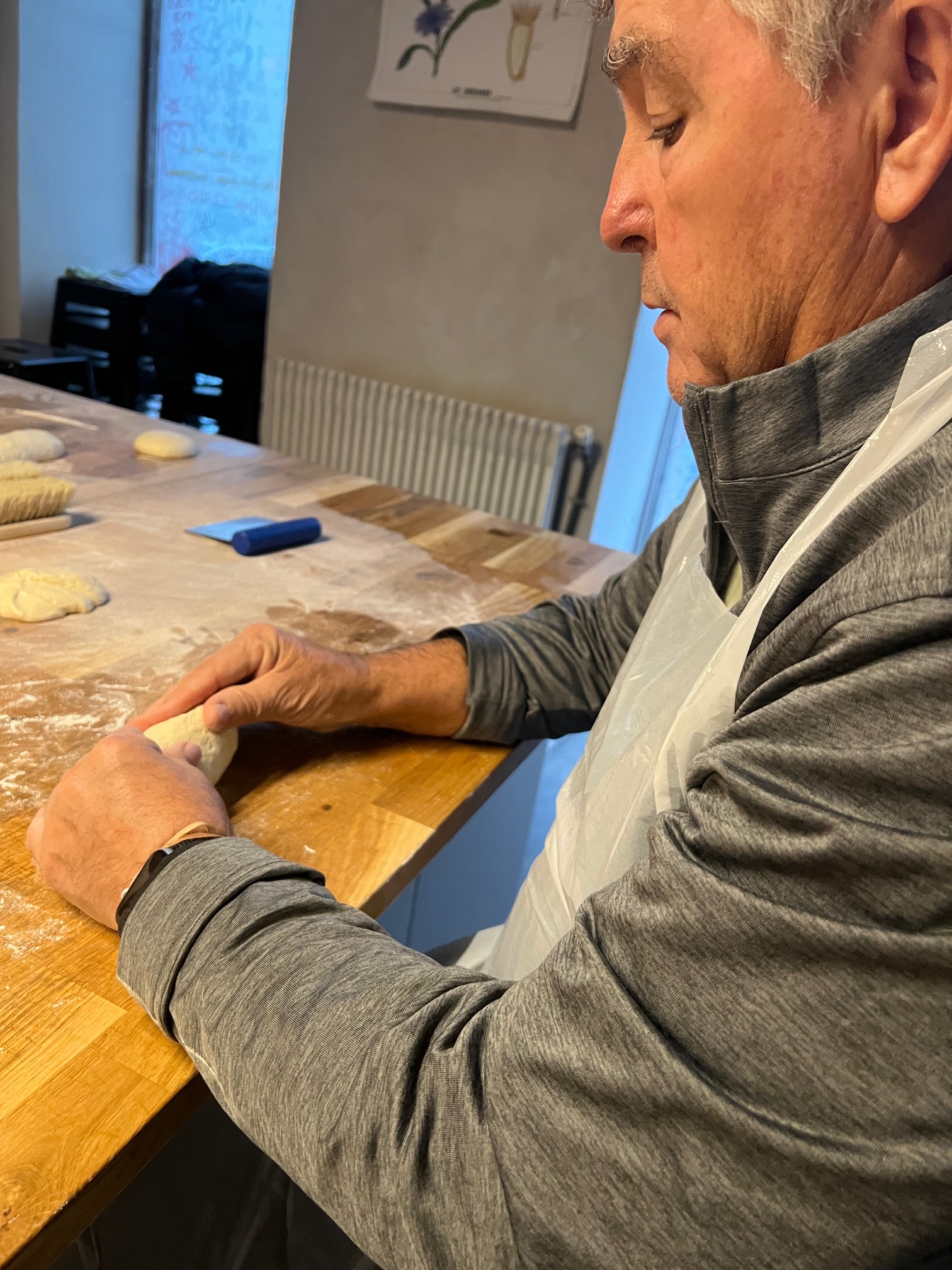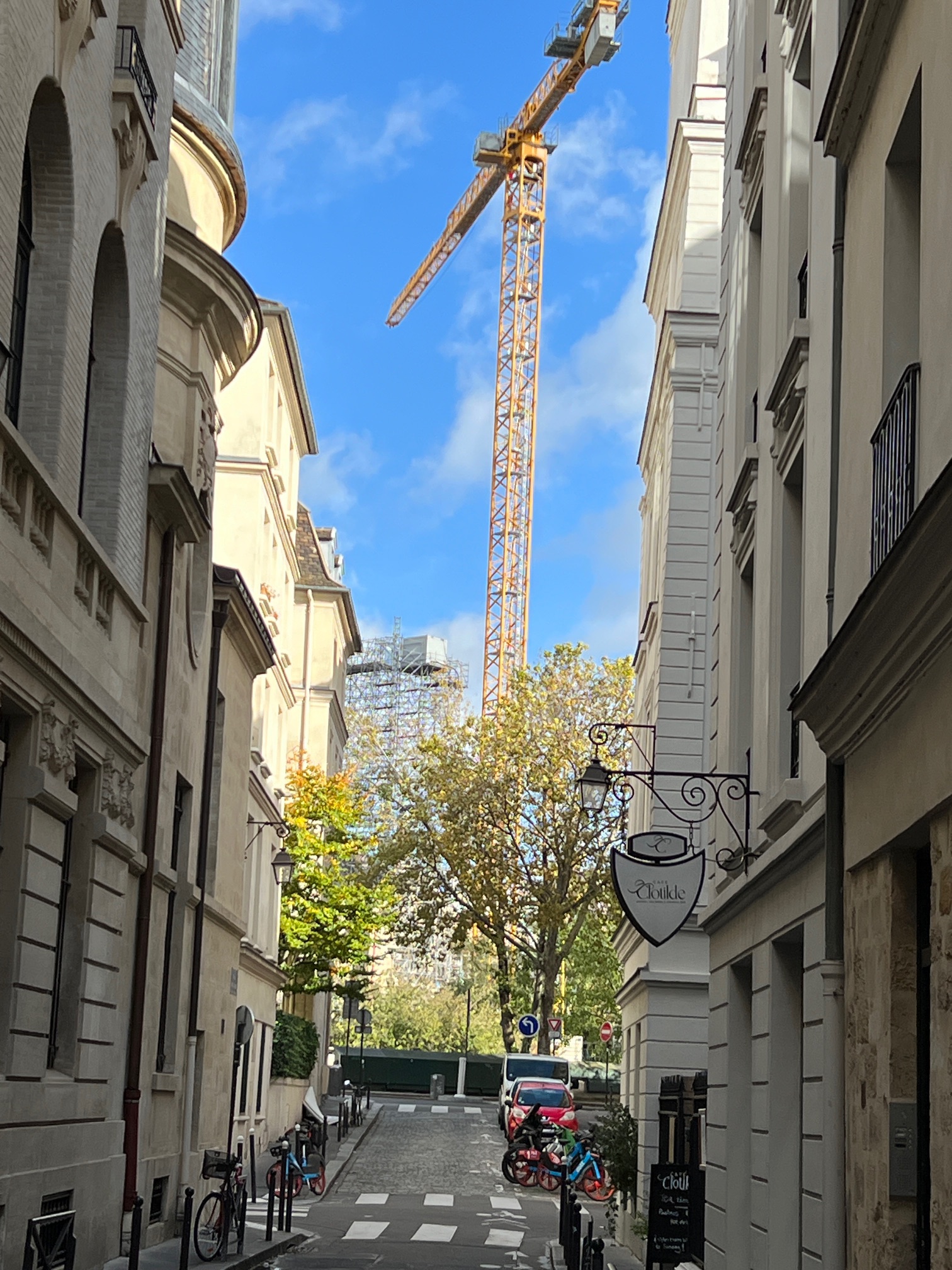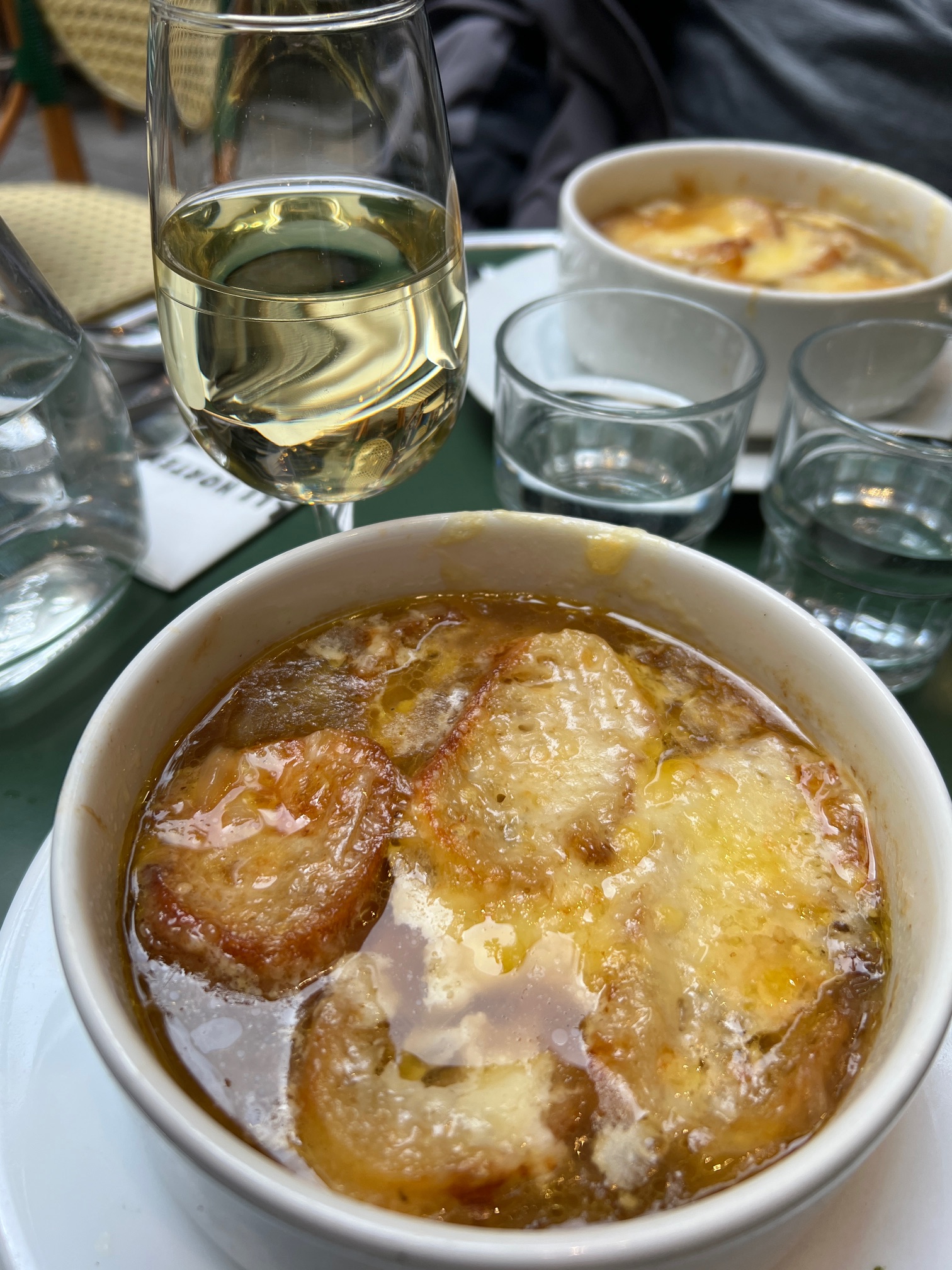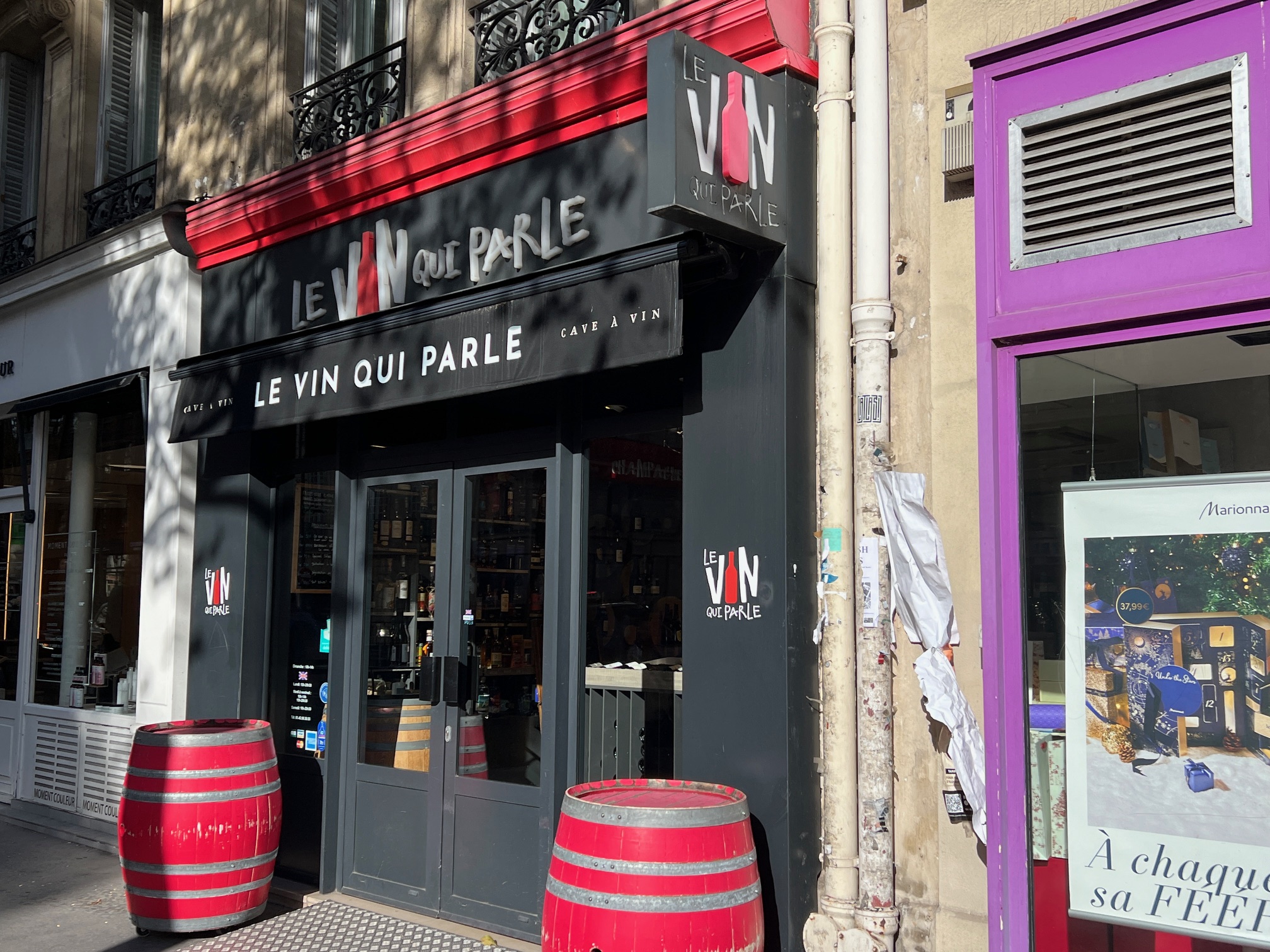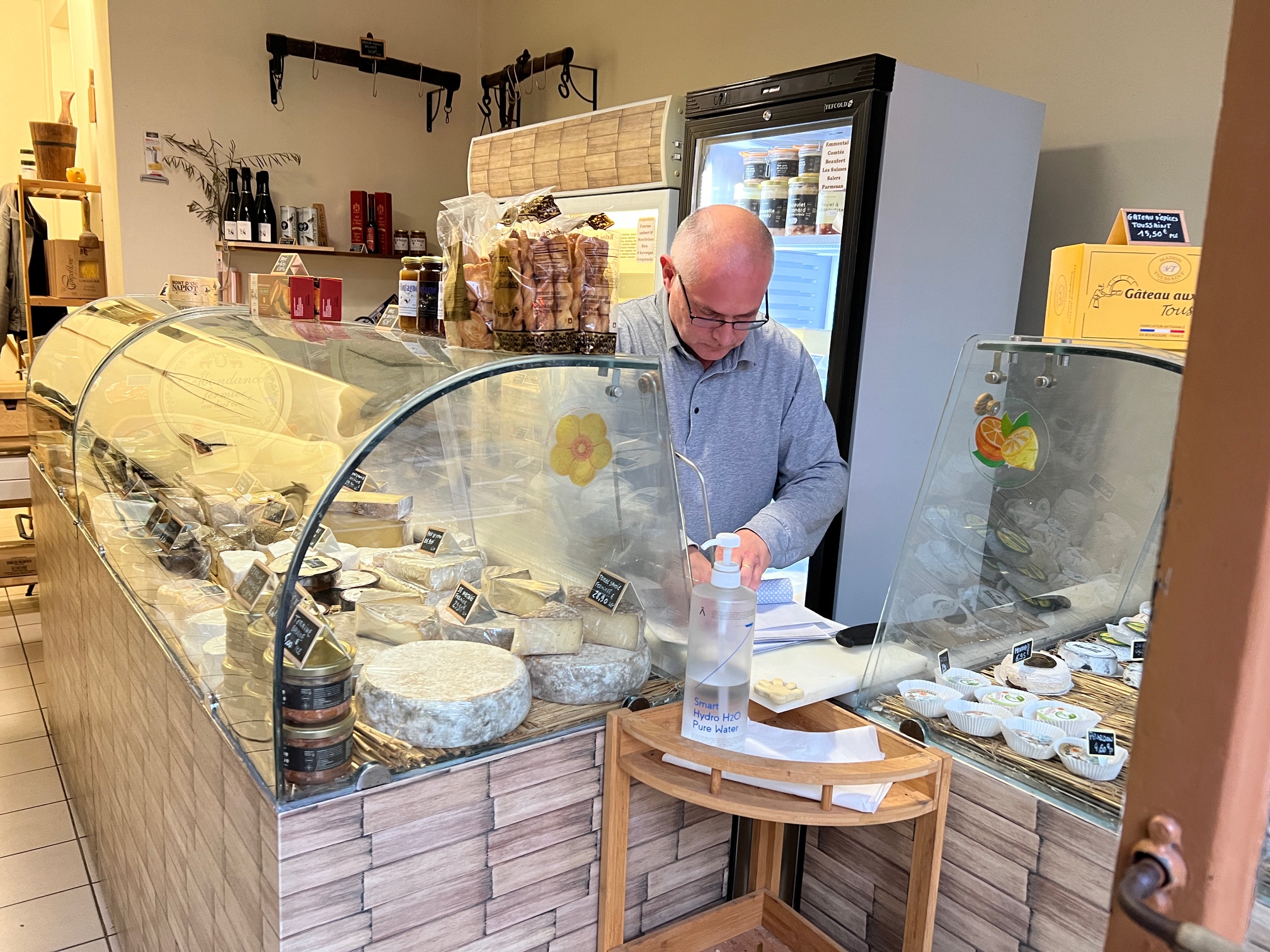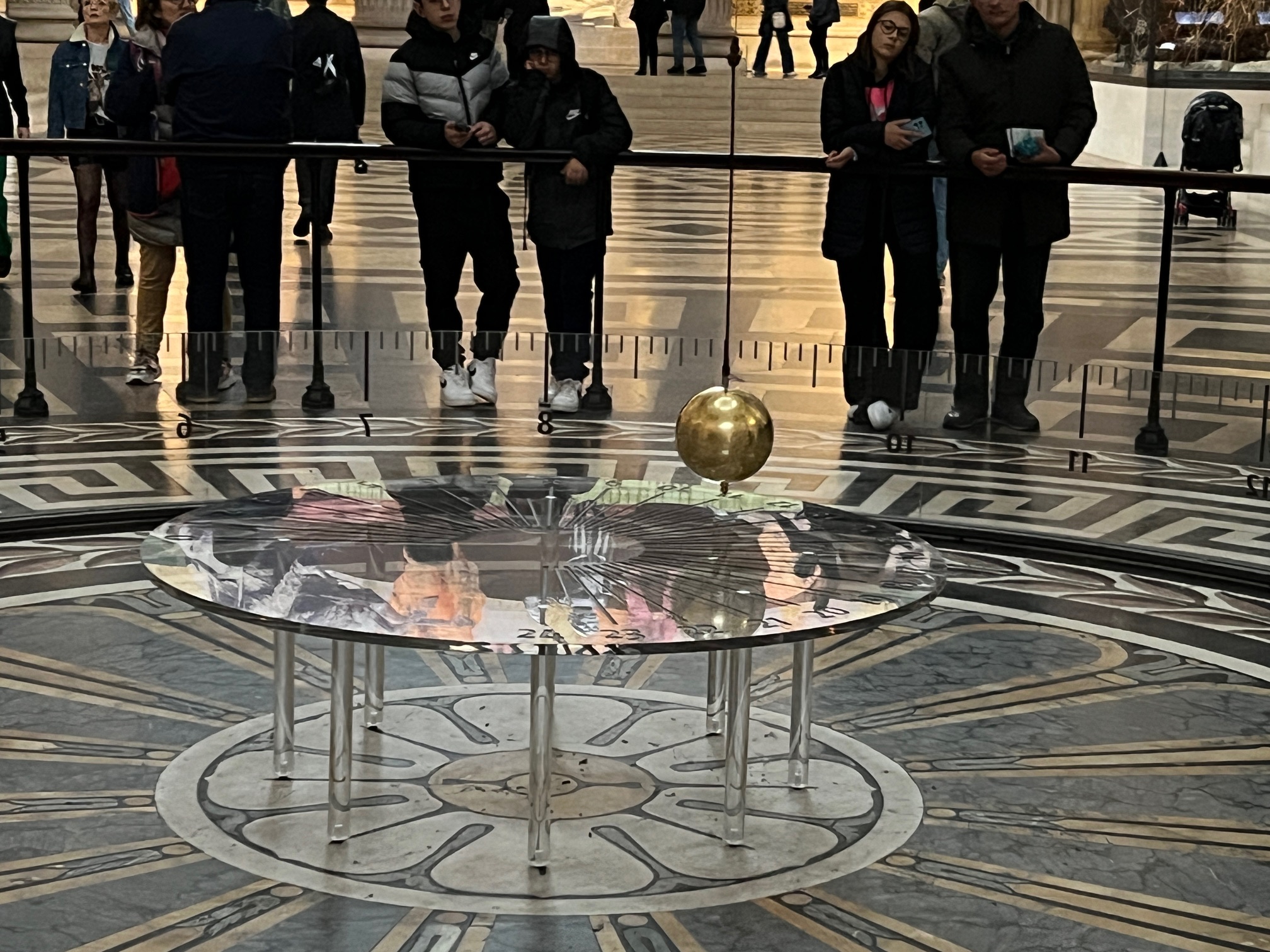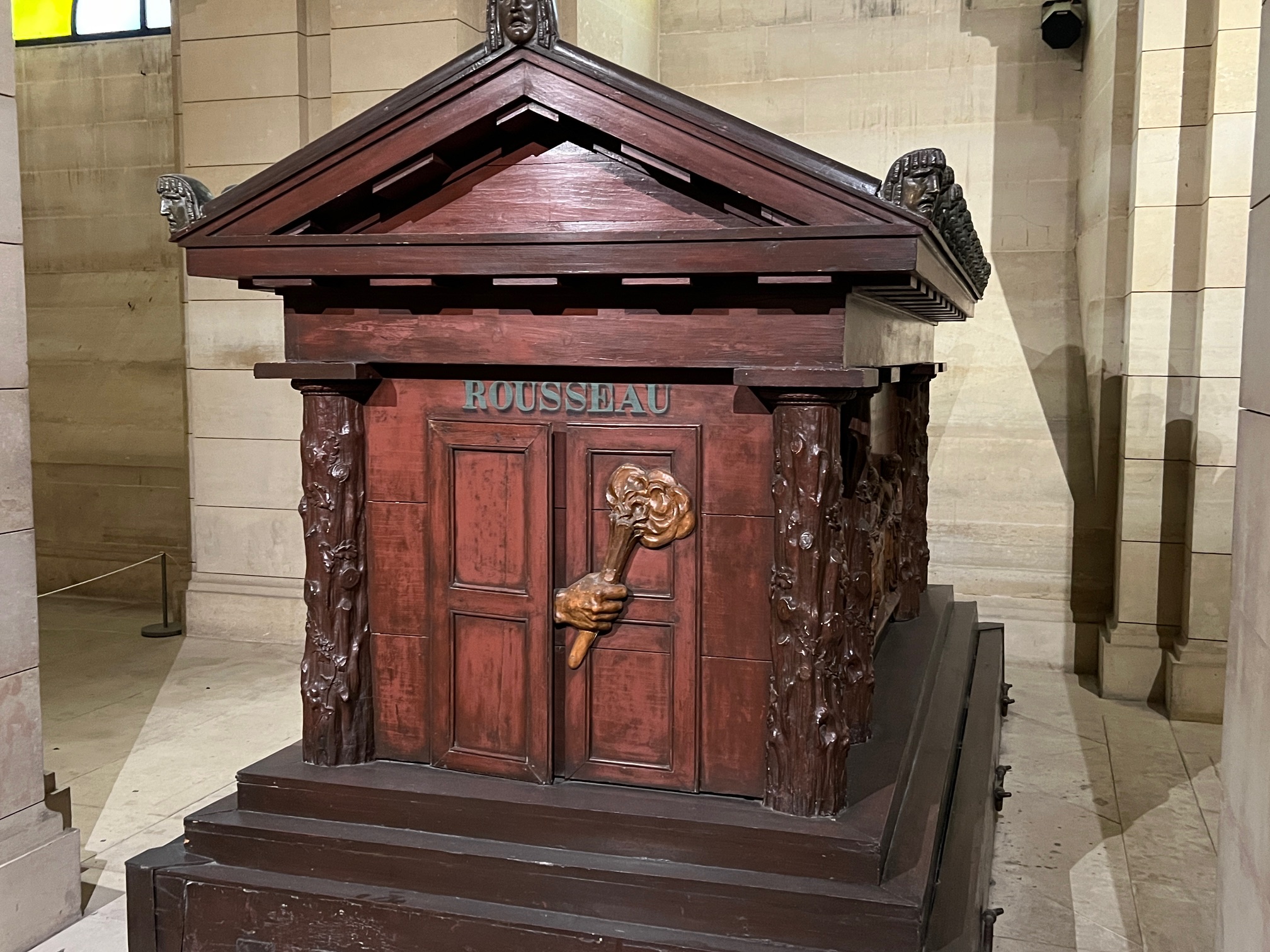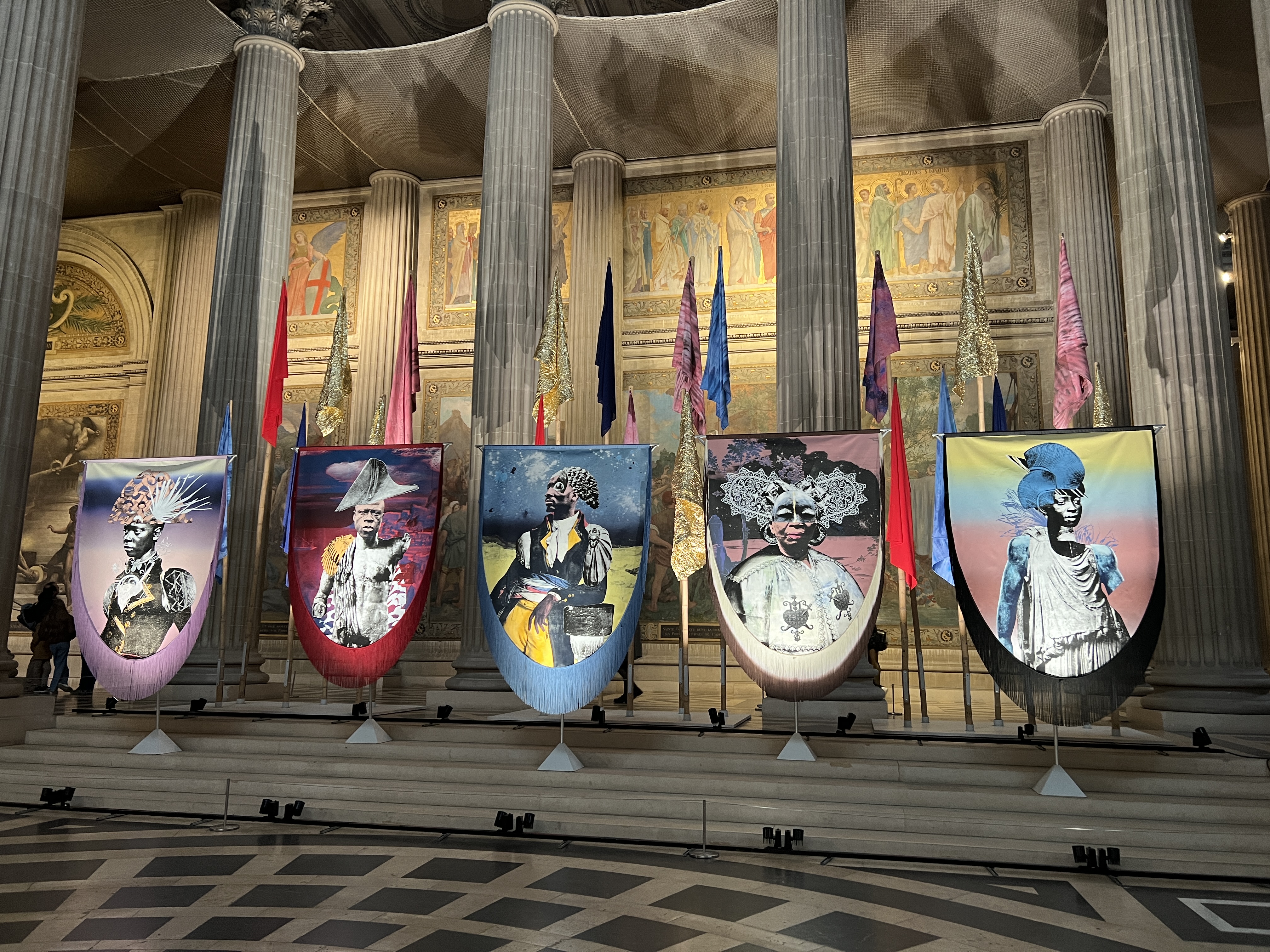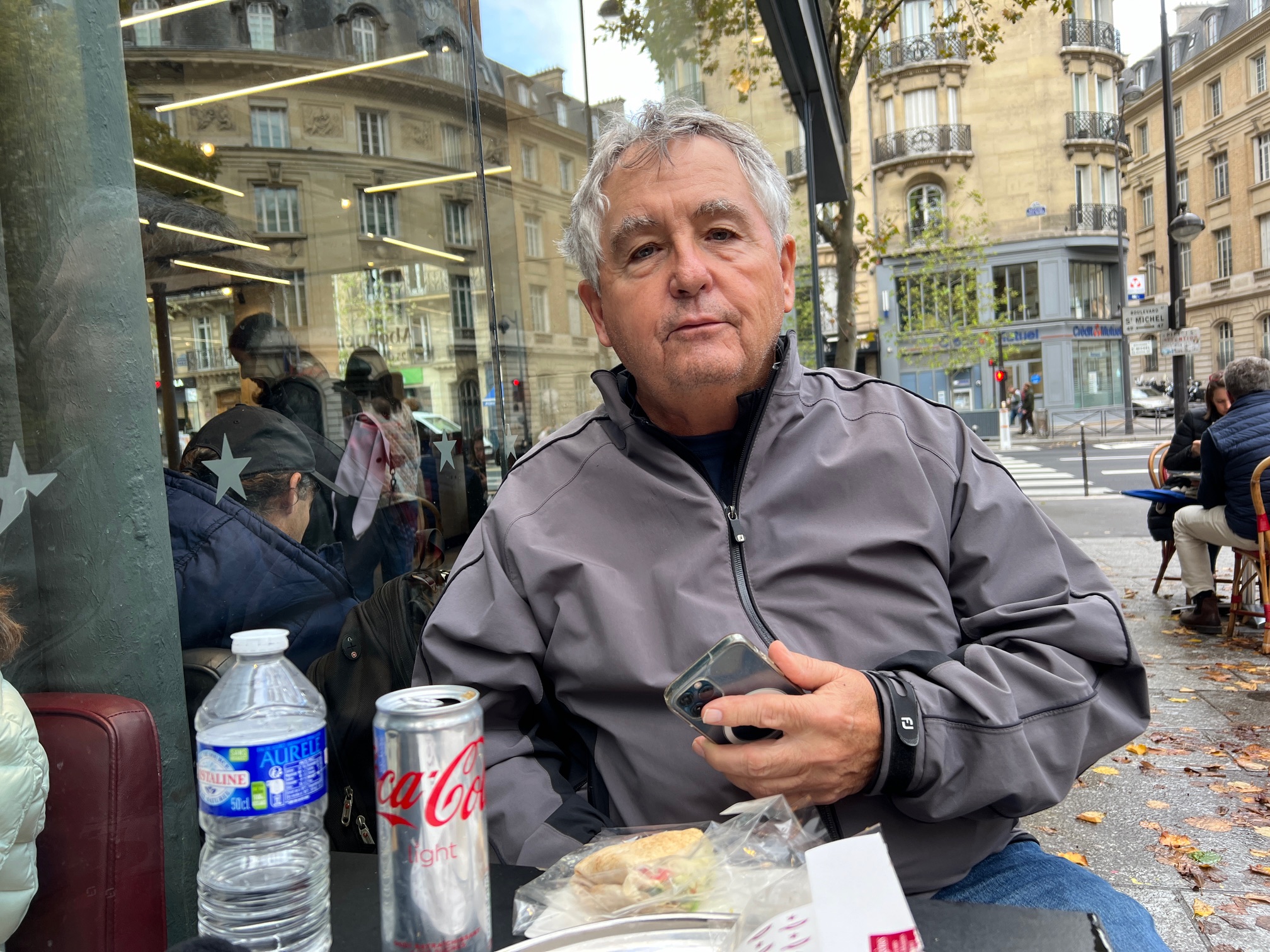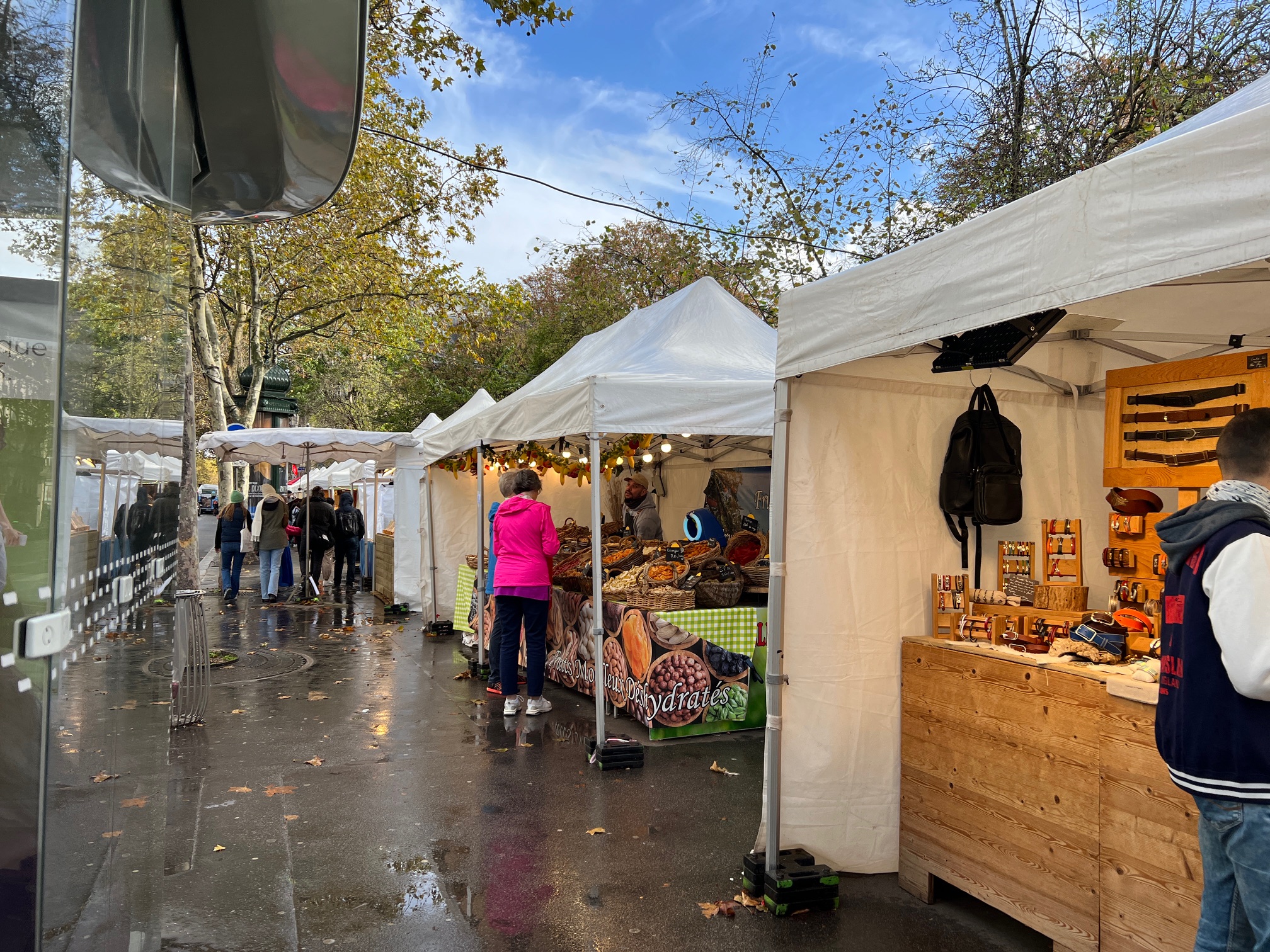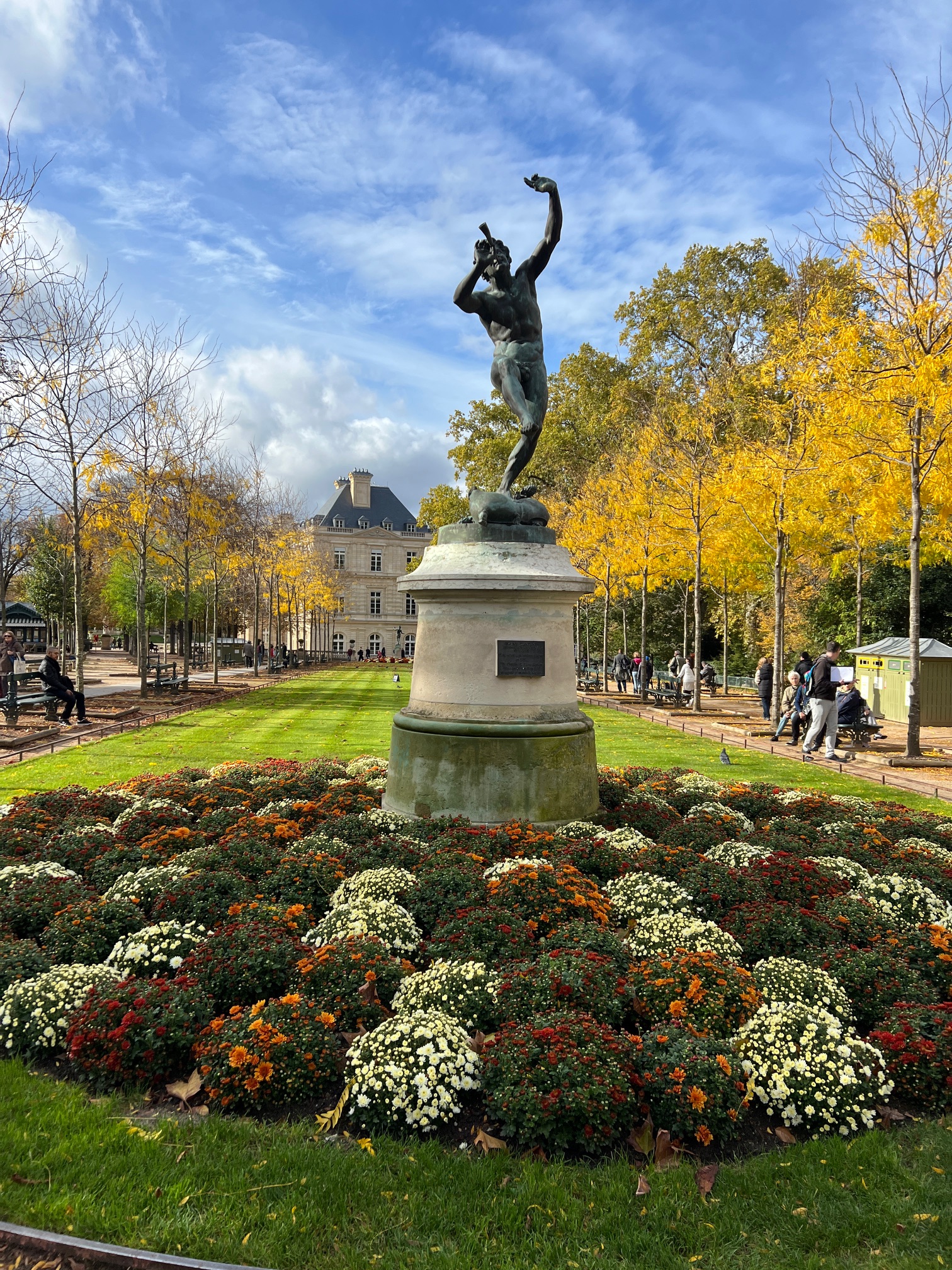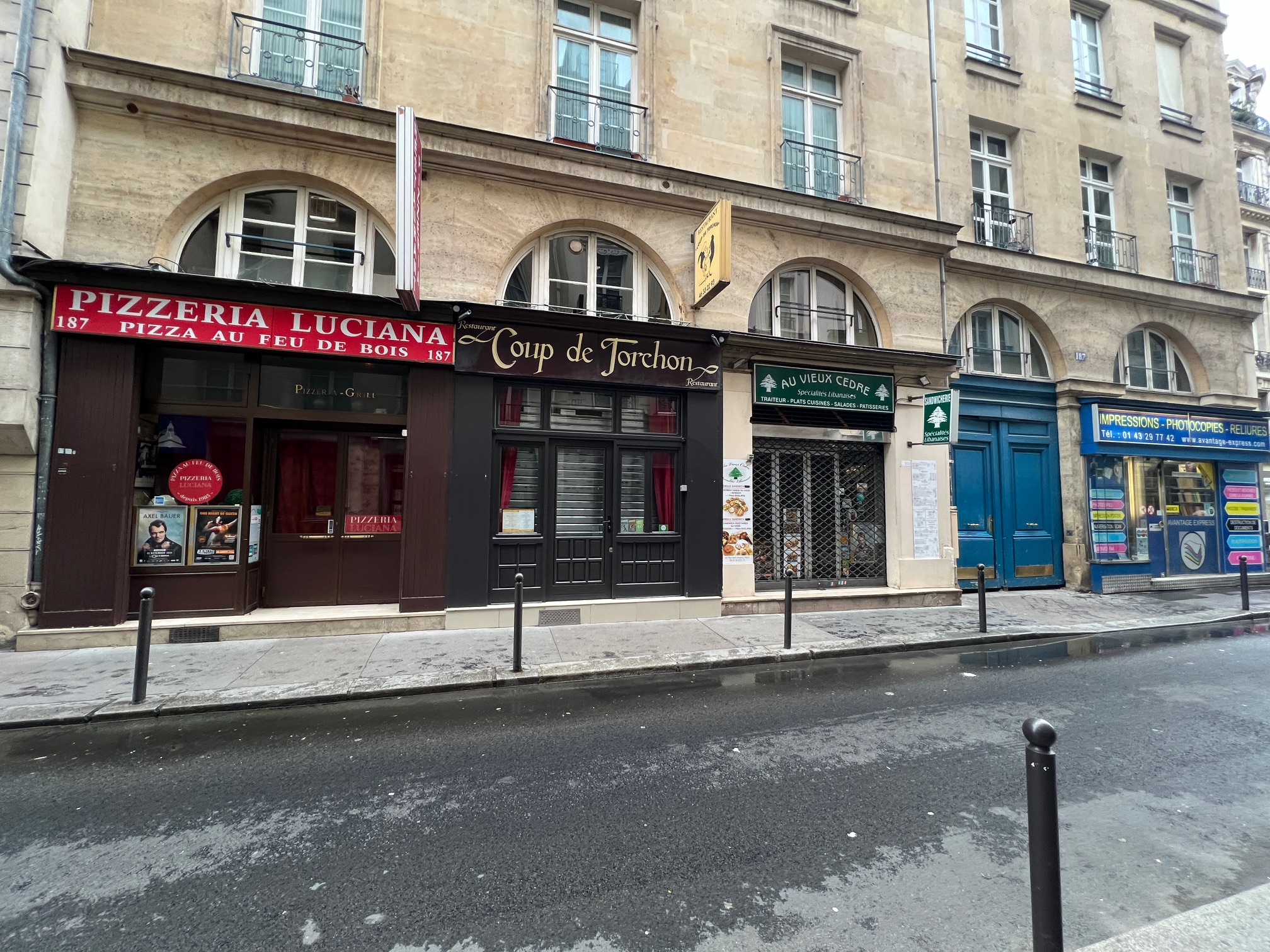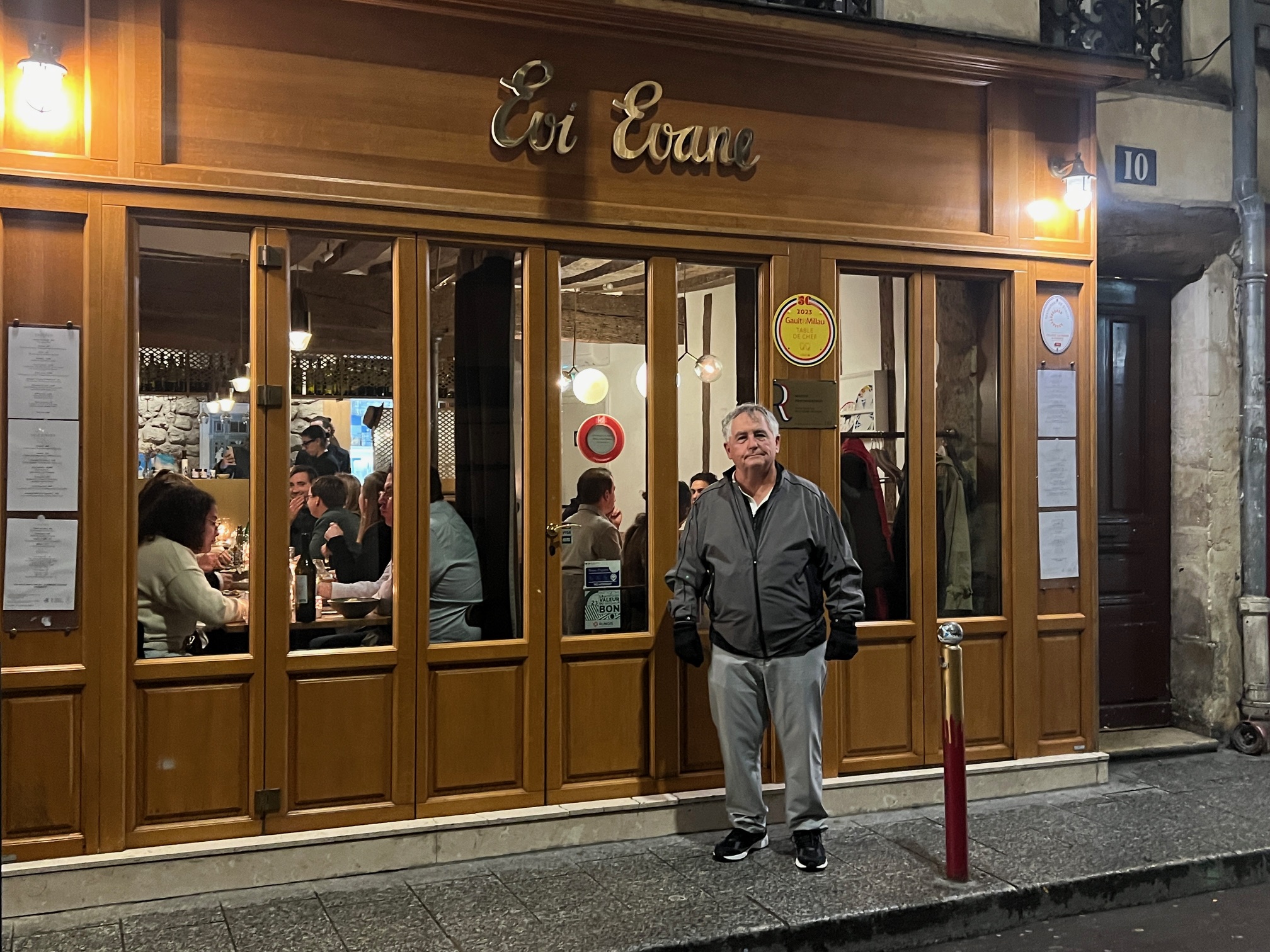We spent our last few days in Paris enjoying as much of this beautiful city as we could.
After strolling the busy Champs Elysees, we stopped at a little bistro. Looking out the window we noticed a number of young women dressed up and posing for pictures on the corner. One woman dangerously posed in the middle of the intersection.
We could not figure out why people wanted their pictures taken on a busy intersection. Our server told us the Eiffel Tower was visible at the end of the street around the corner. Not quite getting the appeal of that particular spot, we still had to take a picture when we left.

Visiting Our Old Neighborhood
Ten years ago we did our first long-term stay in Paris. We rented an apartment in a lovely residential area in the 16th arrondissement for a month. It was the first time we had ever stayed in one place for so long. I still remember Paul asking me if I would get bored. Silly man. We loved it and weren’t quite ready to come home when it was time to leave.
So, we decided to visit the neighborhood we enjoyed so much. Since it was Sunday, most of the businesses were closed, but we found Le Village d’Auteuil, a lovely bistro right off the square for lunch.

Escaping the cool, rainy day, we sat in the cozy bistro, reminiscing about the wonderful times we had there. Before we left, the sun emerged and we enjoyed a beautiful walk to Place du Trocadero.

Place du Trocadero
Situated across the Seine from the Eiffel Tower, Place du Trocadero is a popular spot for a picture-perfect view of the Eiffel Tower.

It also provides a stunning view of the Paris skyline.

I have always seen at least one bride at Place du Trocadero and today was no exception.
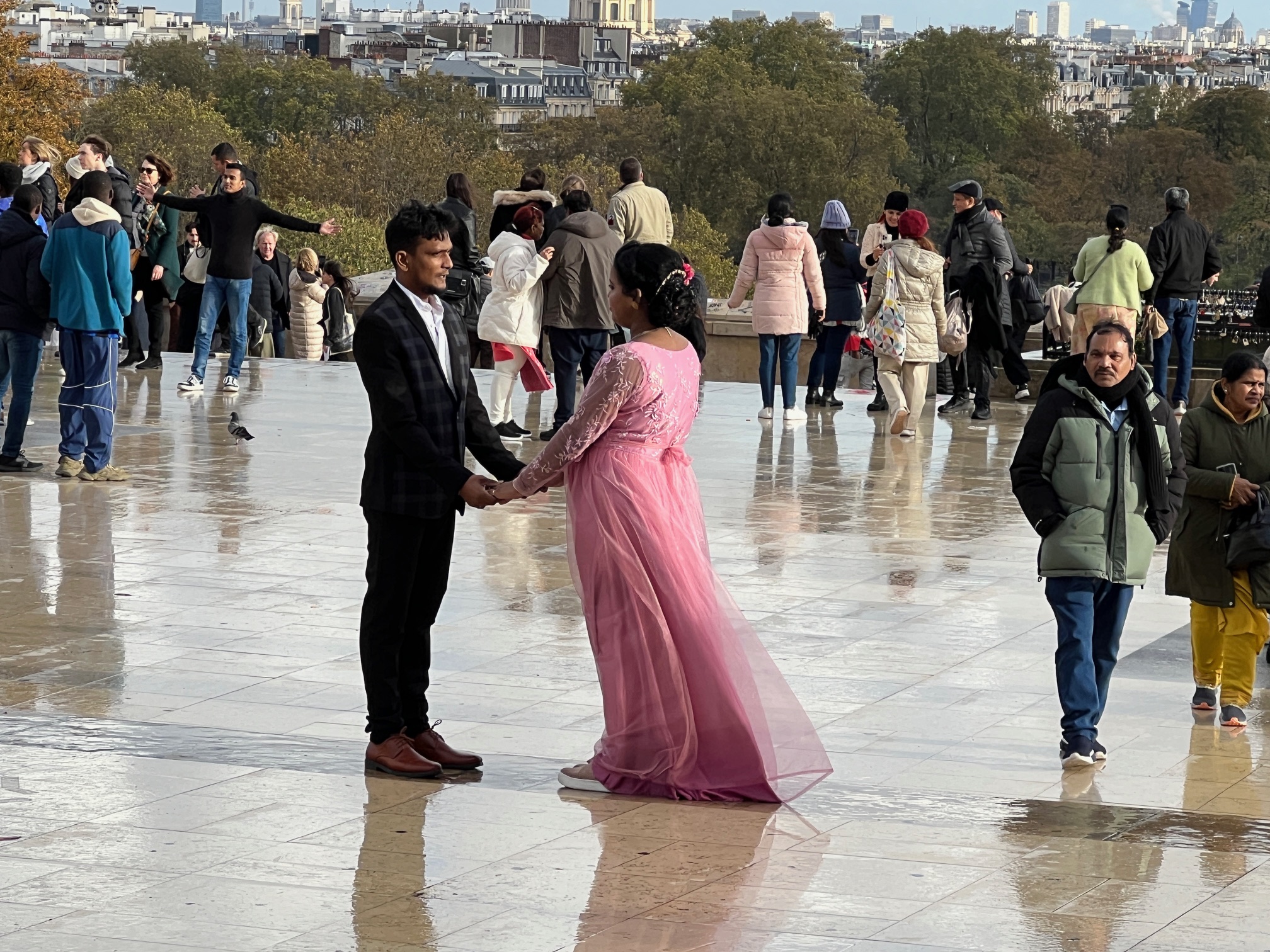
However, it is not as picture-perfect as it has been in past years. Place du Trocadero is one of more than seventy construction projects going on in Paris in preparation for the 2024 Olympics.
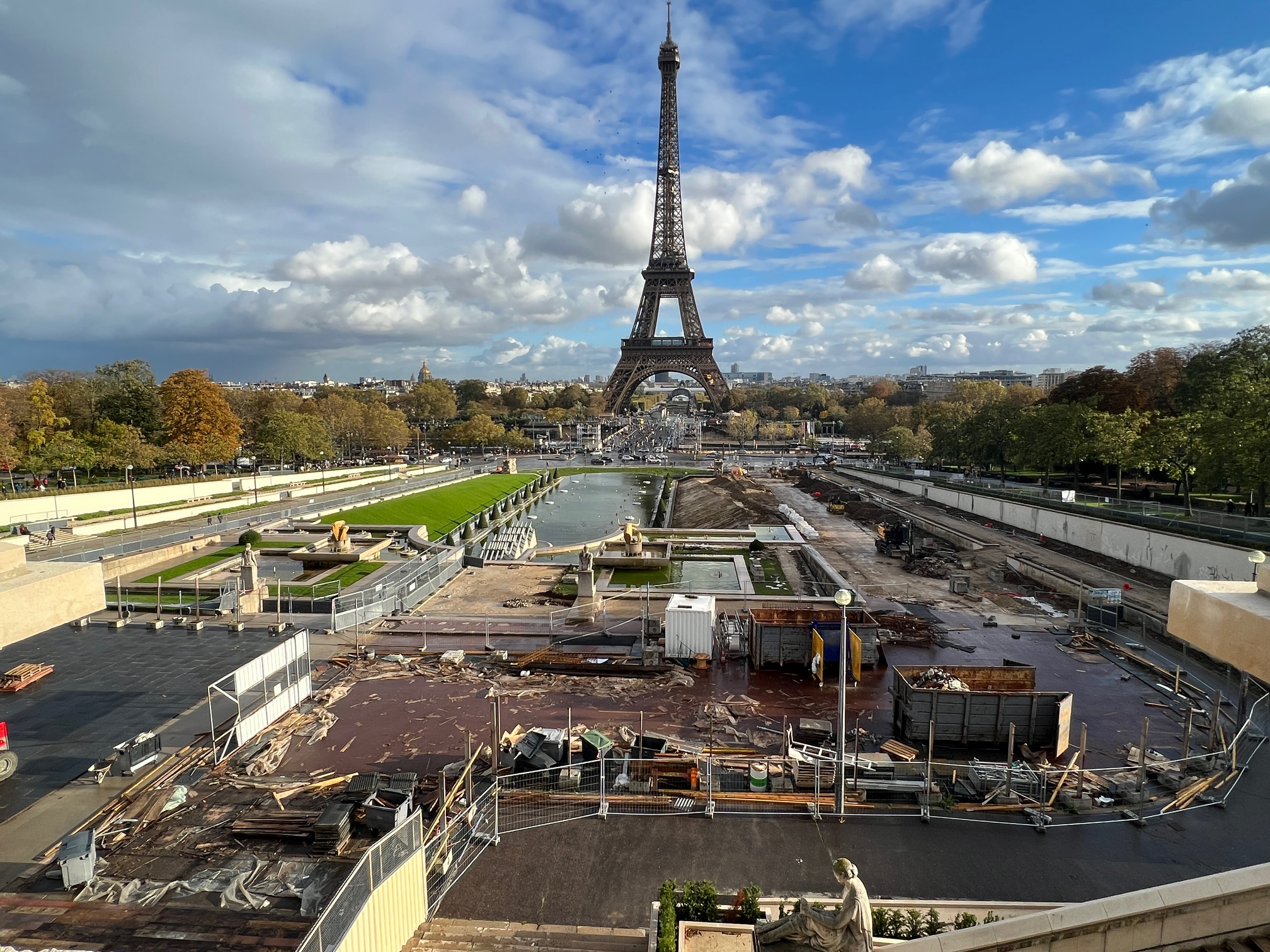
A bit unsightly now, it will be beautiful when it is completed. Budgeted to cost over 72 million euros, the renovation includes gardens that will stretch from Place du Trocadero across the river to the Eiffel Tower.
Gertrude Stein and Pablo Picasso
We took a lovely walk through the Luxembourg Gardens to get to the “Gertrude Stein and Pablo Picasso, The Invention of Language” exhibit at the Luxembourg Museum.

Marking the fiftieth anniversary of Picasso’s death, the museum organized an exhibit on the story of the extraordinary friendship between the two icons of the 20th century.
Pablo Picasso, one of the most influential artists of the 20th century, is known as one of the co-founders of the cubist movement.
Perhaps best know for her famous quotation, “A rose is a rose is a rose”, Gertrude Stein was an American writer. Her early support of Picasso is considered critical to his success. Living in France from 1903 til she died in 1946, Stein influenced many artists of the time. Many of these artists’ works were displayed.
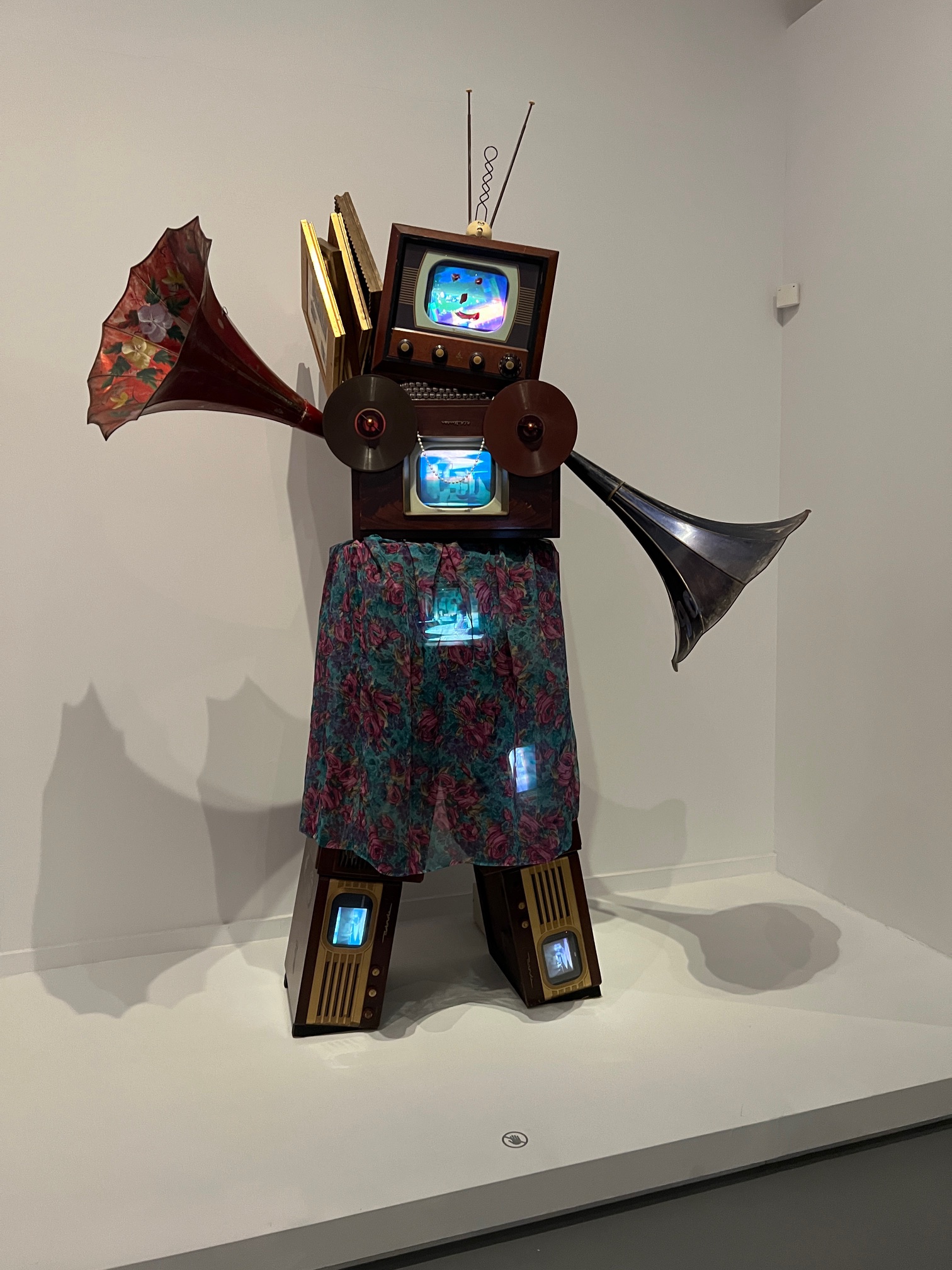
Although it was an interesting exhibit, we were expecting more Picasso and less Stein. There were just a few Picasso paintings displayed.
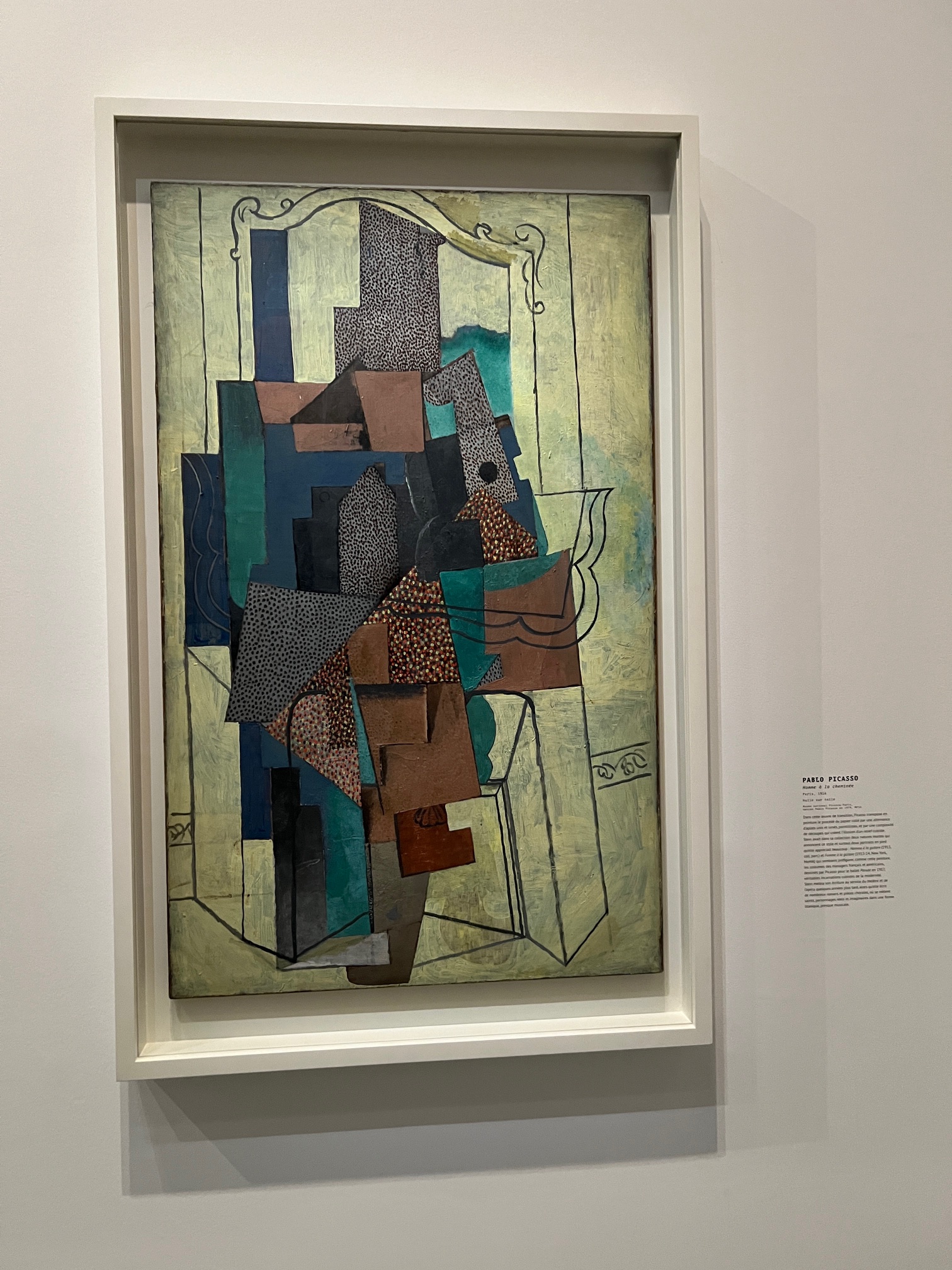
There was an interesting display of Andy Warhohl’s Ten Portraits of Jews of the 20th Century. Gertrude Stein is the second picture from the left on the top row.
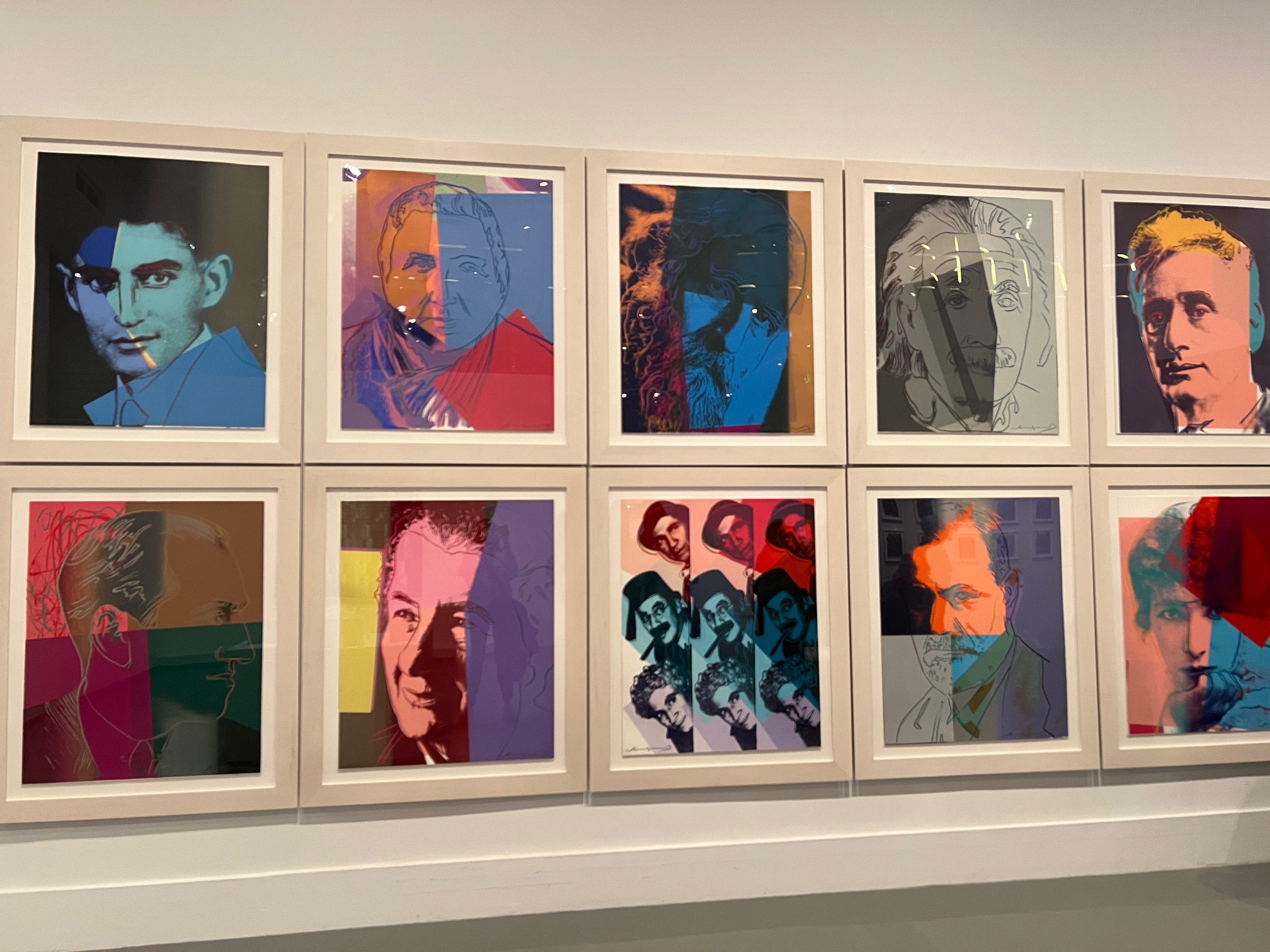
Last Meals in Paris
On our last day in Paris we wanted our meals to be special. For lunch, we discovered the charming La Crepe Rit du Clown not far from the Luxembourg Museum.
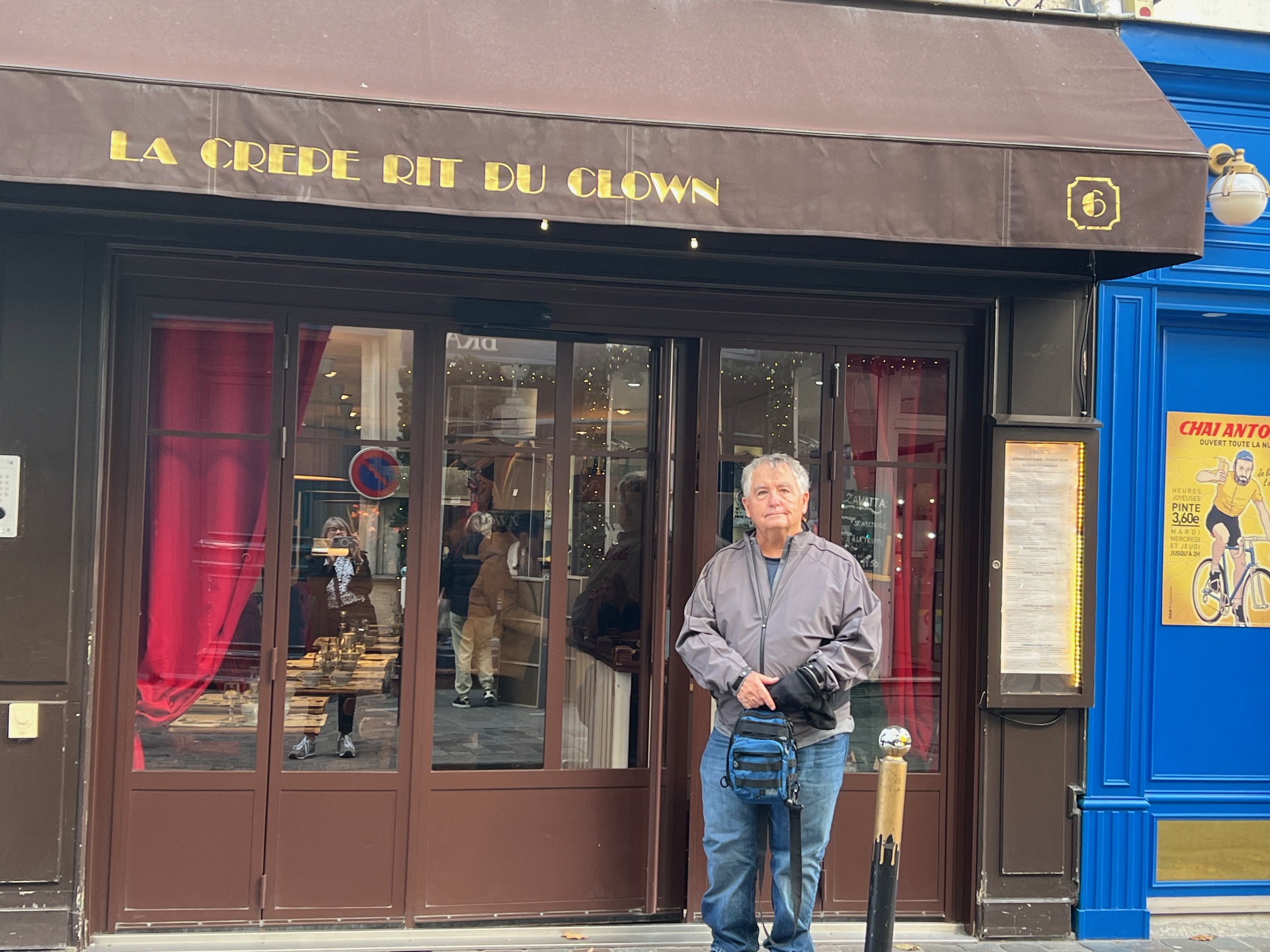
We ate galettes, a type of savory crepe made with buckwheat flour.
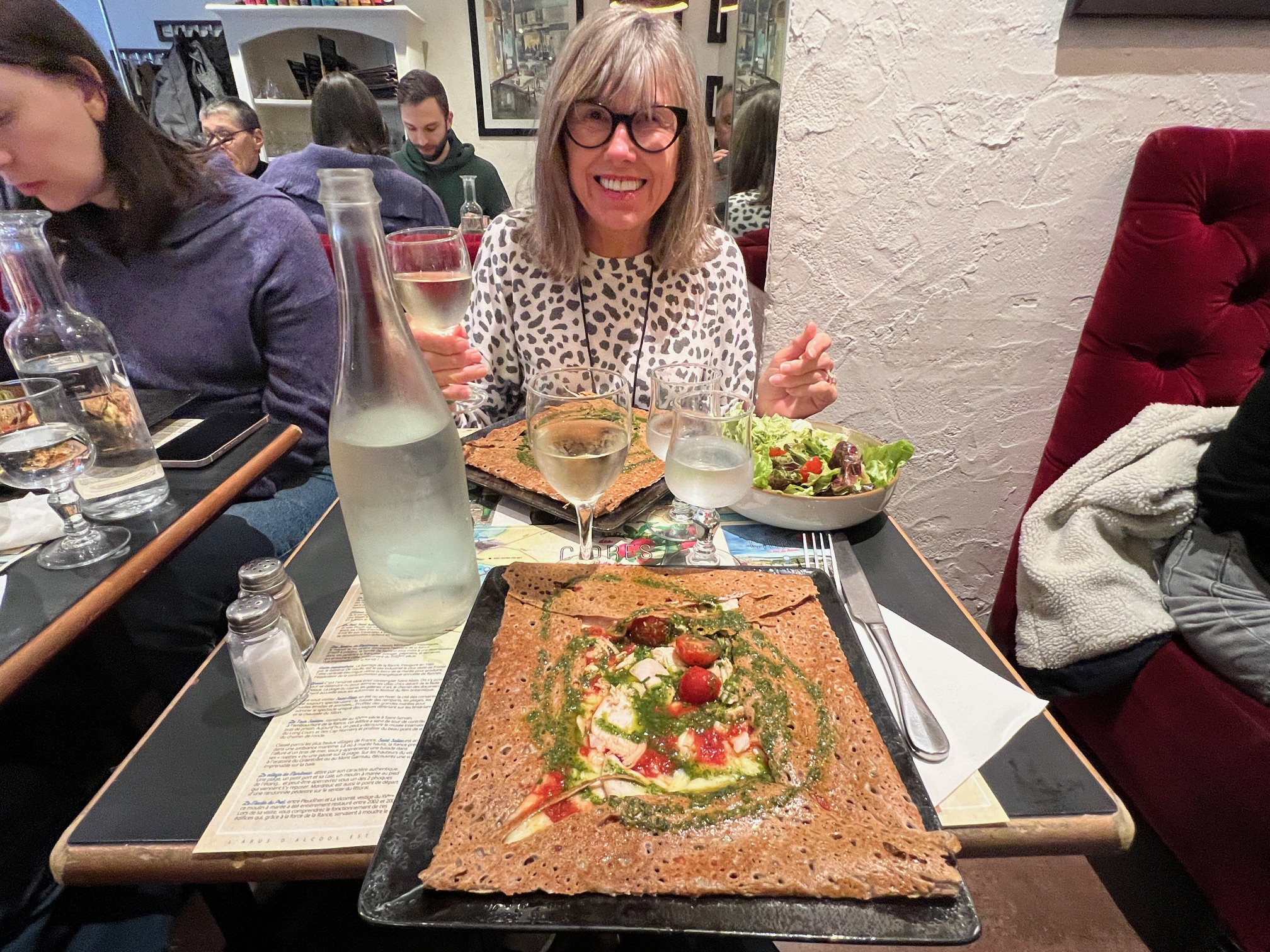
After lunch we returned to the museum and had luscious pastries at Mademoiselle Angelina’s Tea Room. Every pastry is a work of art. We almost hated to take a bite of the cubist pastry created by Angelina’s head pastry chef in honor of the Picasso exhibit.

And for dinner, we had-pizza! But not just any pizza. Casa di Peppe, located just 30m from our apartment, is the European champion of Neapolitan pizza. We had tried for days to get a reservation.
We started with a luscious broccoli veloute with tiny pan-fried carrots. Google Translate did not give us a definition for veloute. We expected sauteed vegetables and got a creamy broccoli soup. It was delicious, and now I know what veloute is.

The pizza was good, but the end of the evening was the best part. As we were leaving, I asked the owner if I could take a picture of his huge pizza oven. He took my phone, escorted us to the kitchen and gave me one of the paddles. The cooks gathered round and he took our picture. They were all laughing and having so much fun. I think it must be a wonderful place to work.
It was a perfect ending to our last evening in Paris.

All Good Things Must Come to an End
Like I feel at the end of all great trips, I am both sad to leave and happy to be going home. I am going home with wonderful memories of great food, incredible wine, beautiful art and architecture, friendly people (yes, most Parisiennes are friendly) and gracious lifestyles.
And, unlike I feel at the end of other trips, I know I will return. Paris, a bientot!

